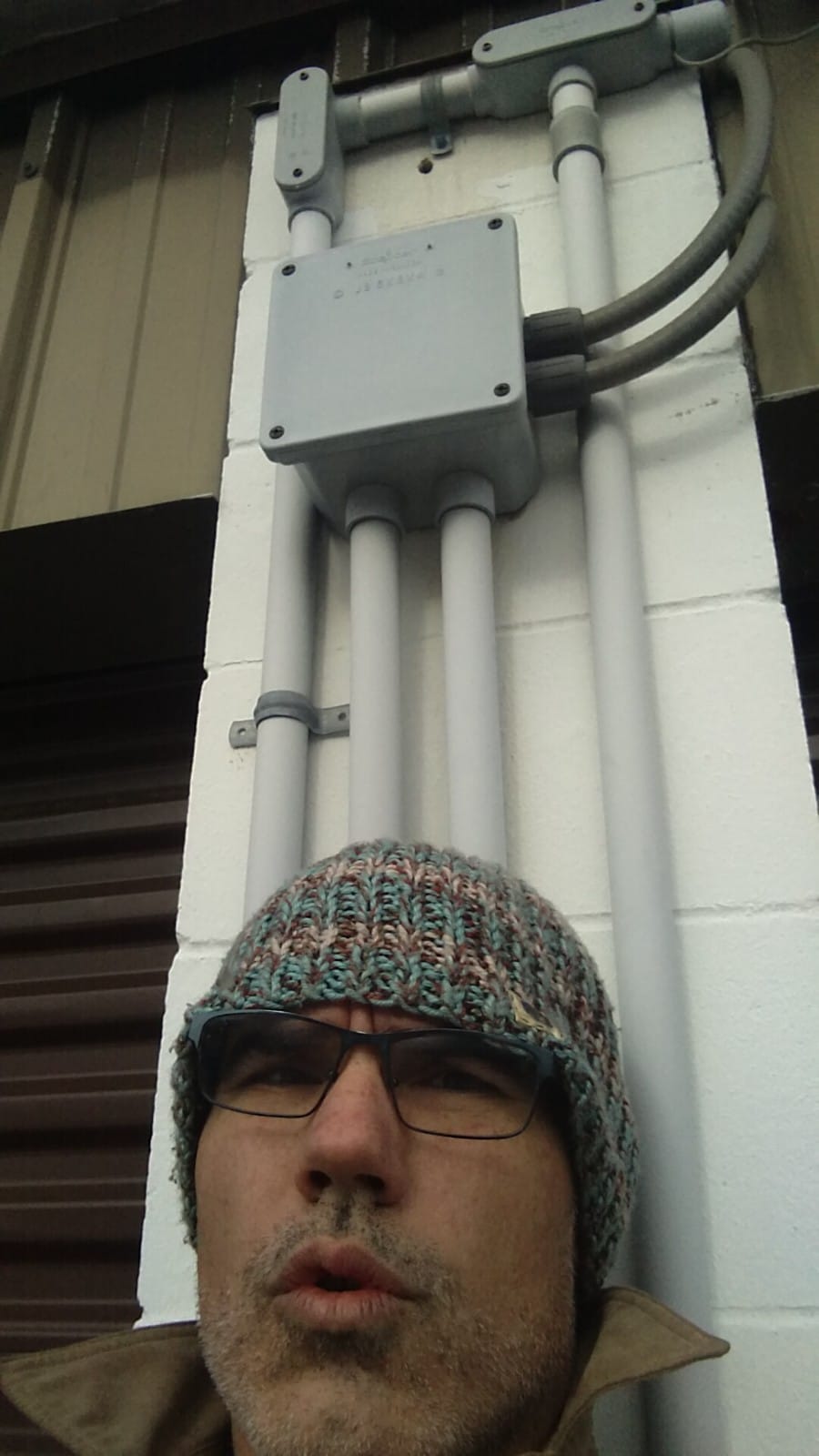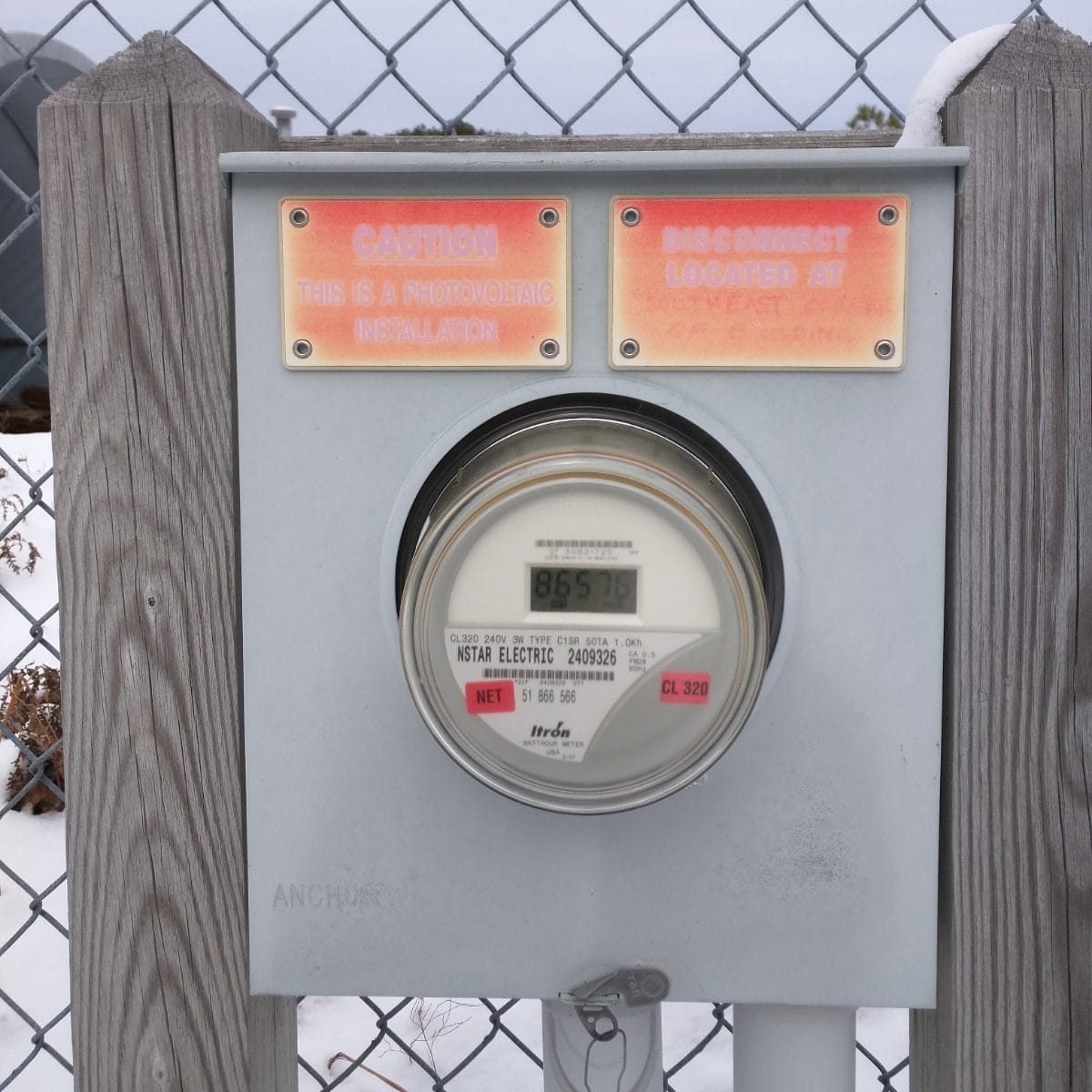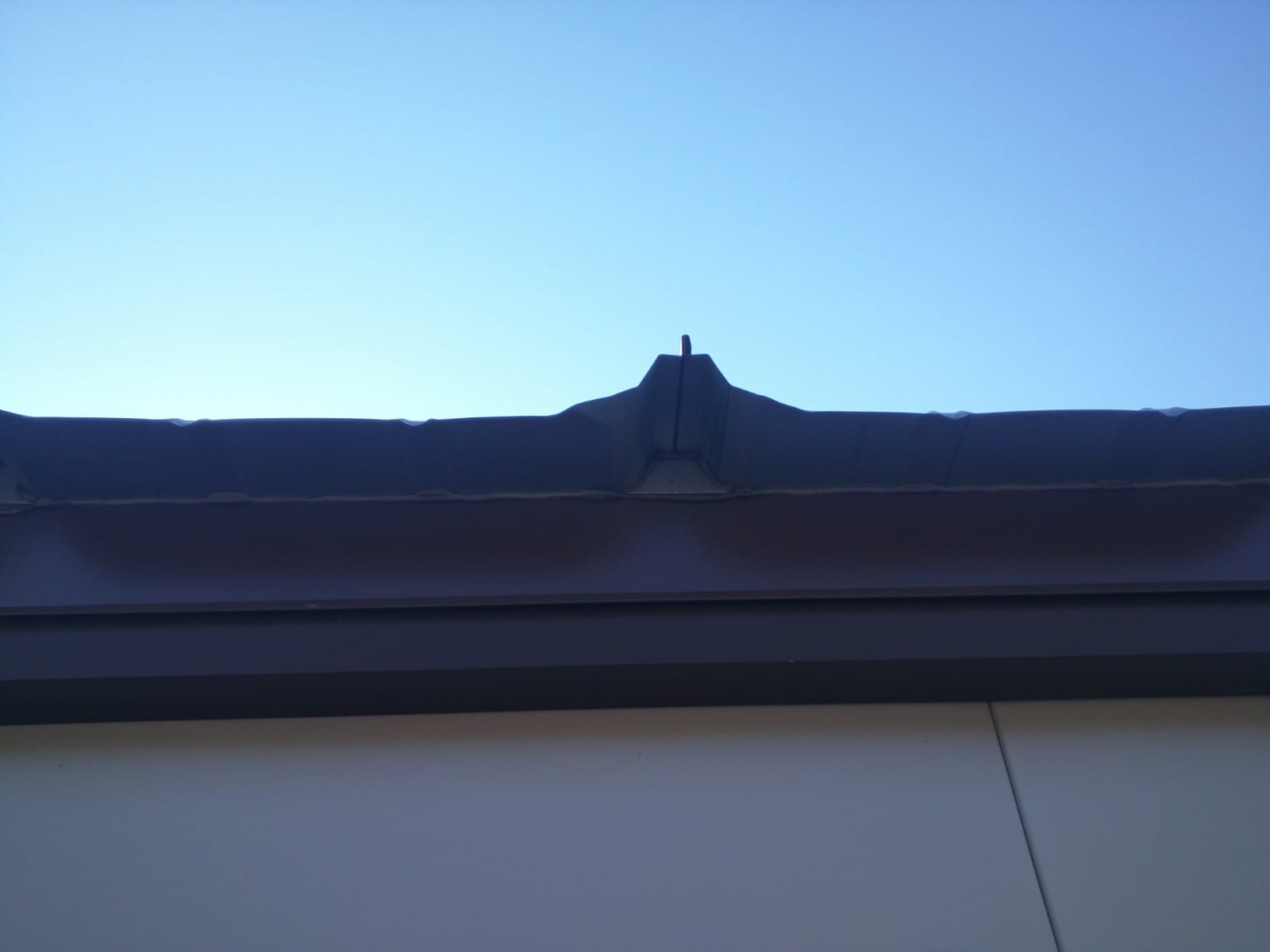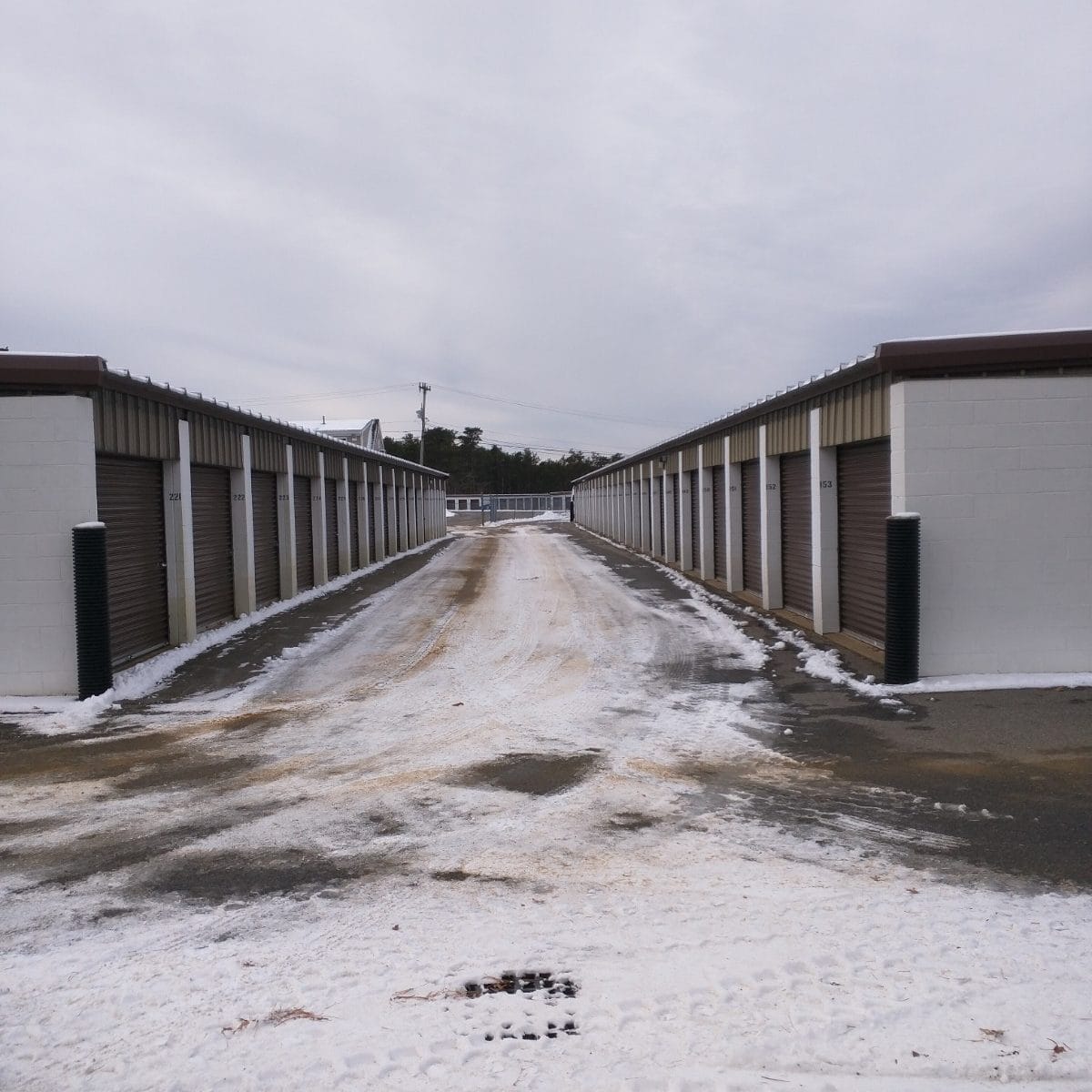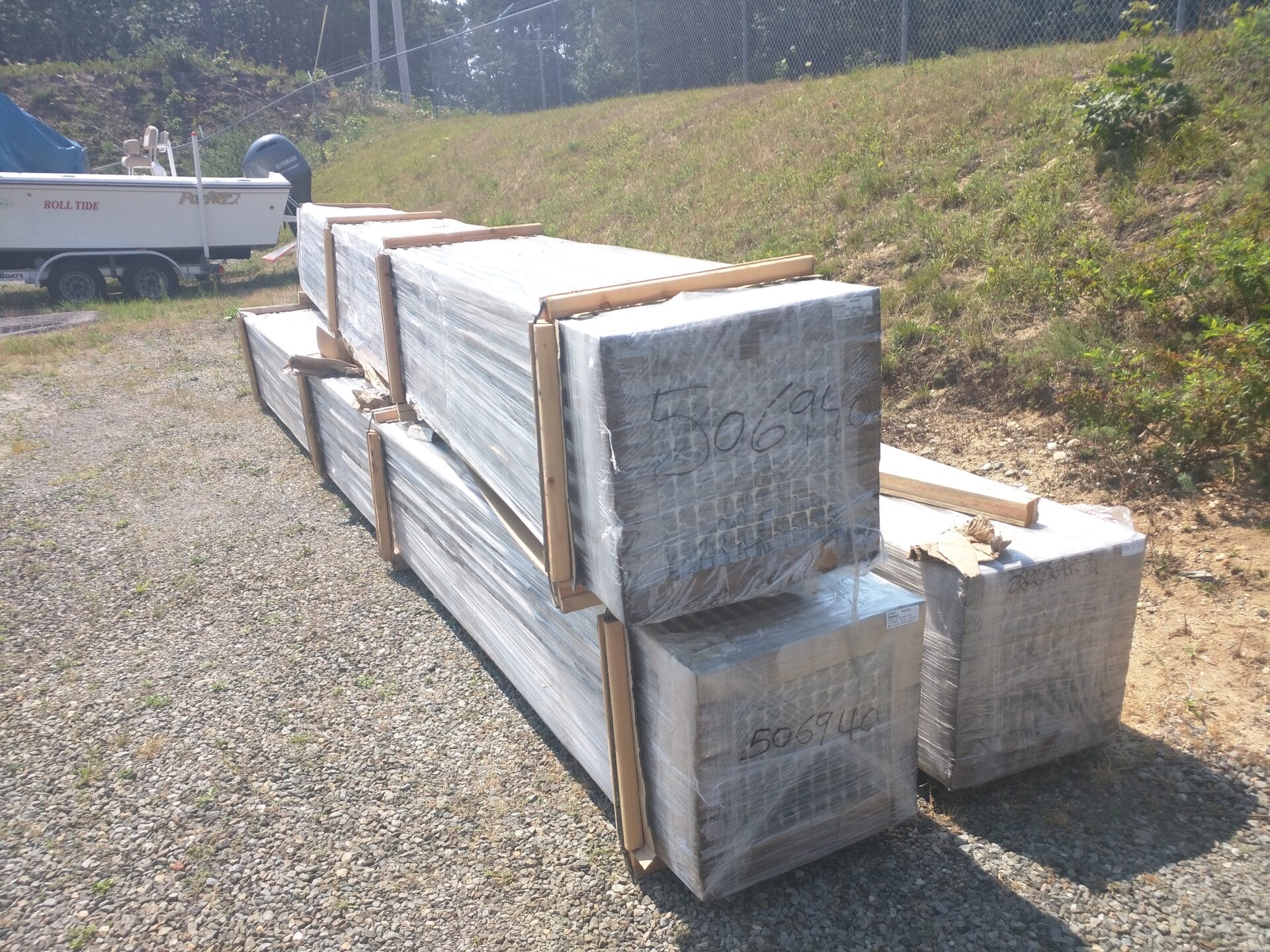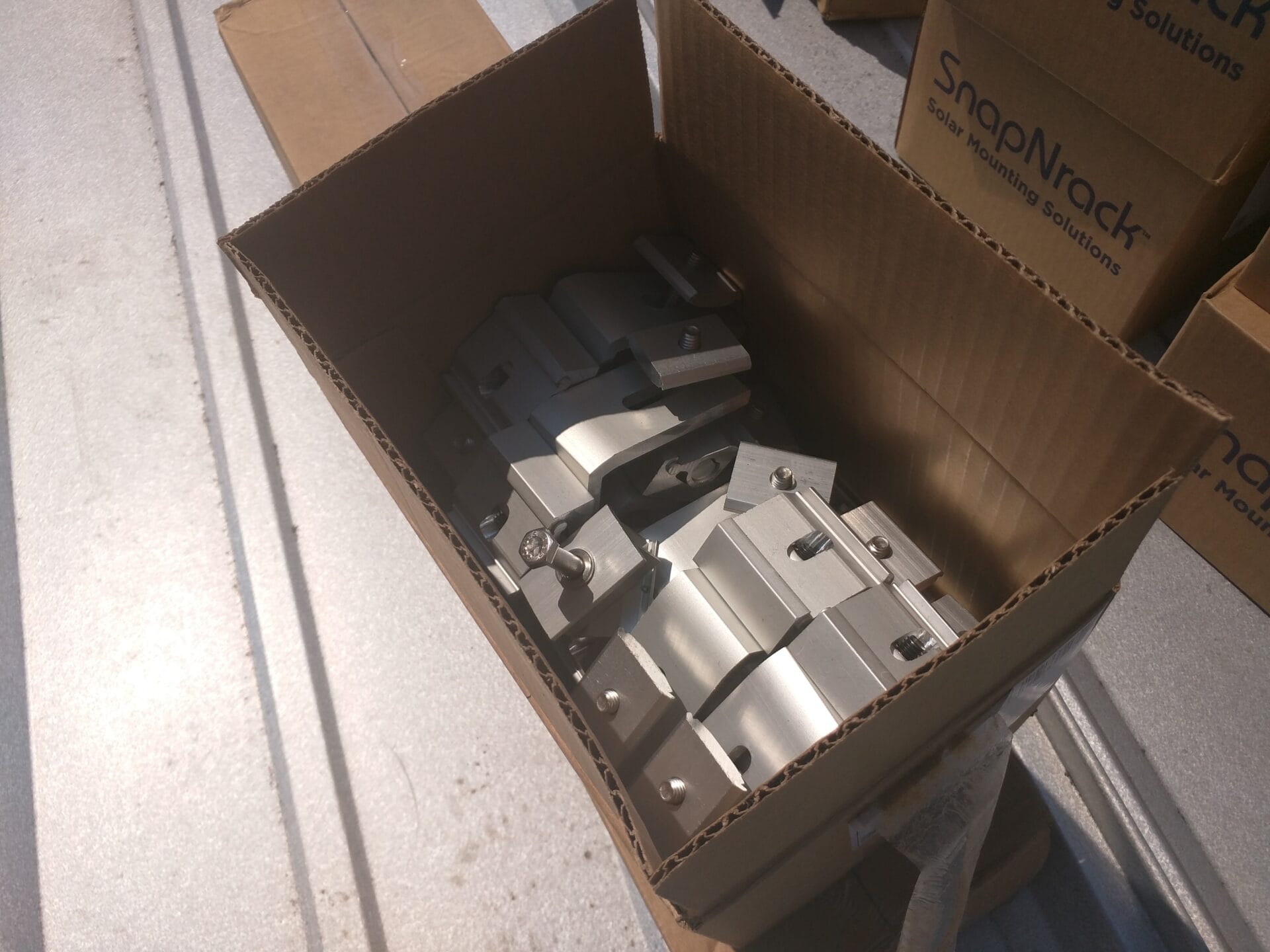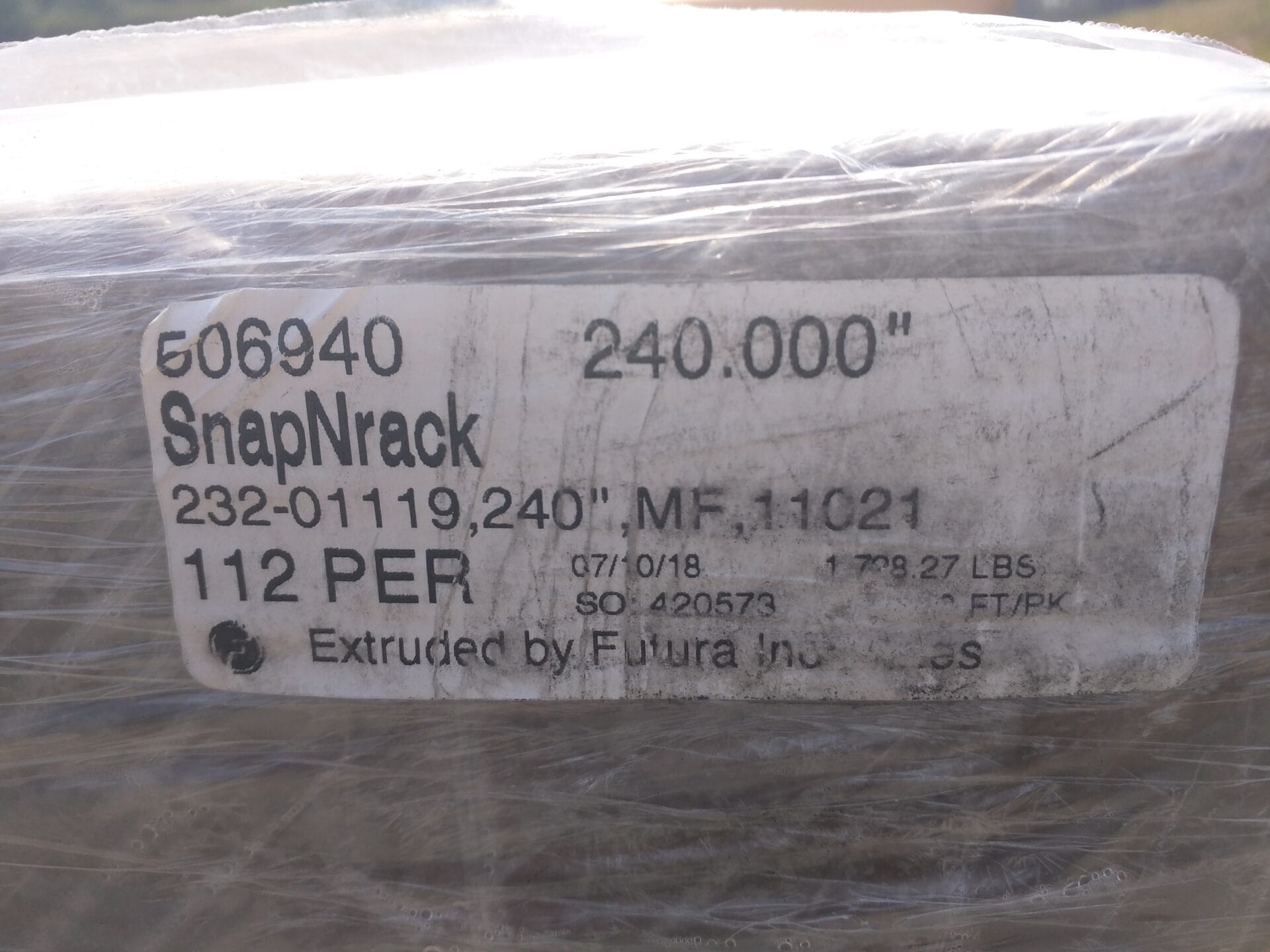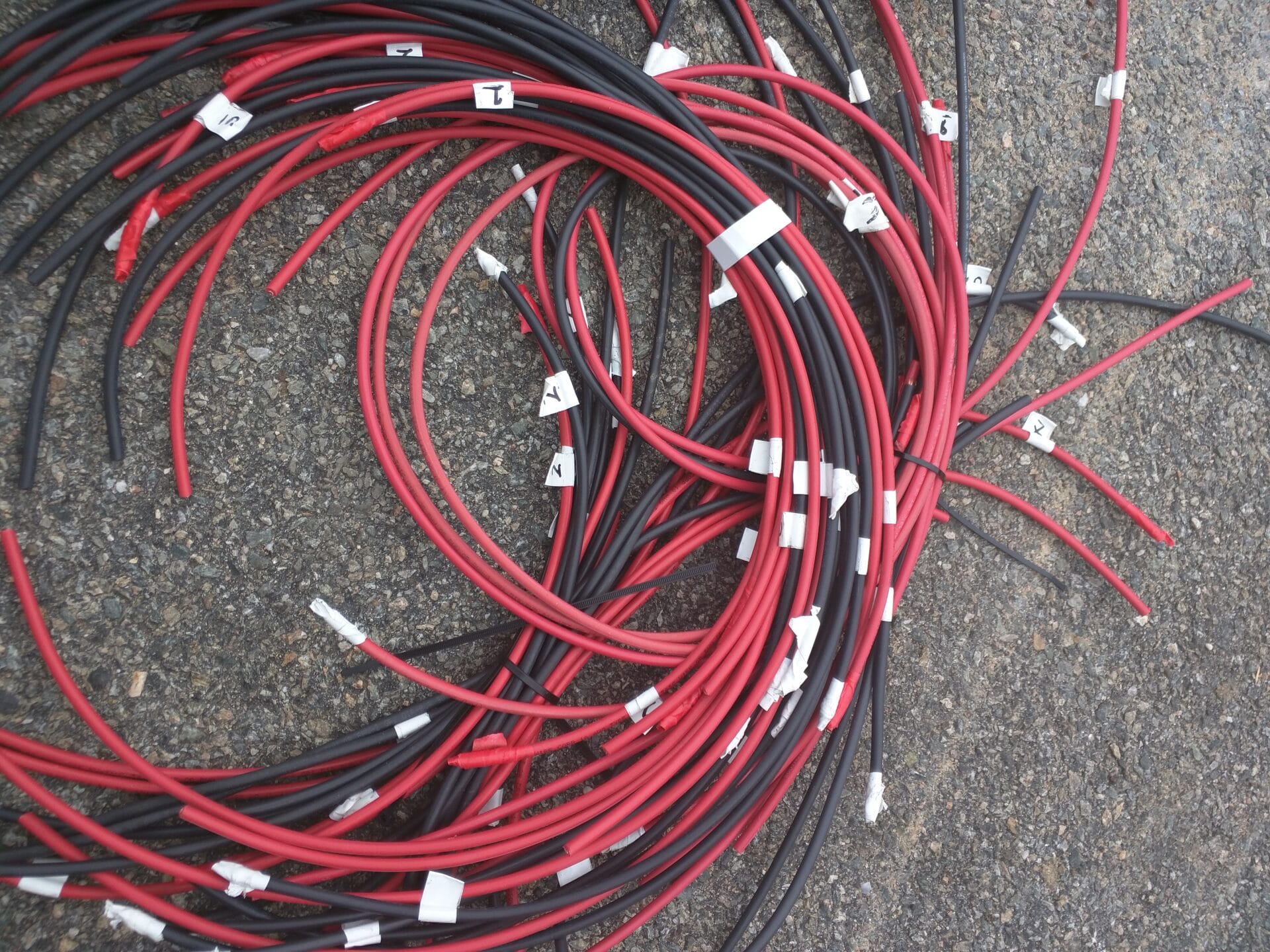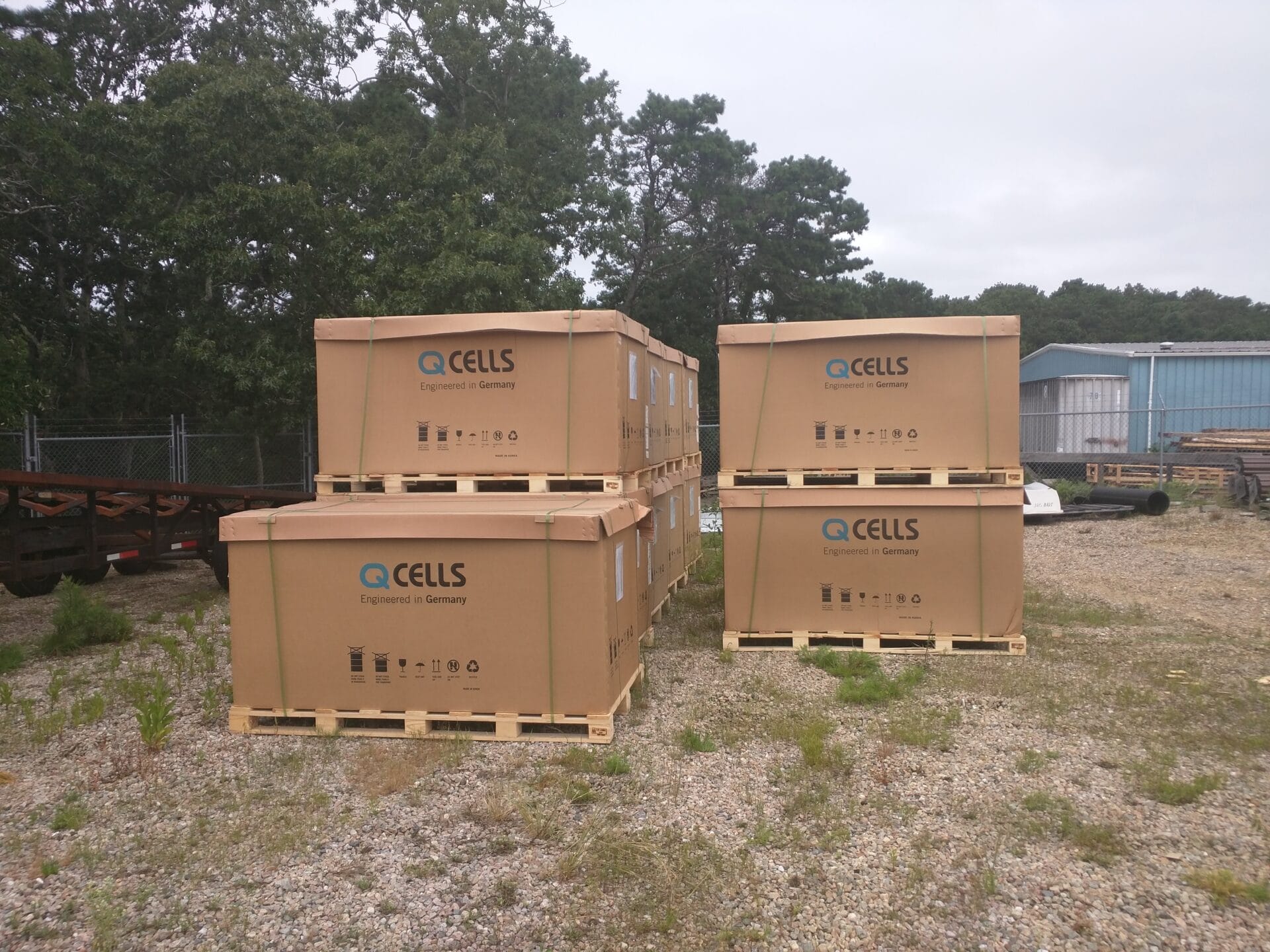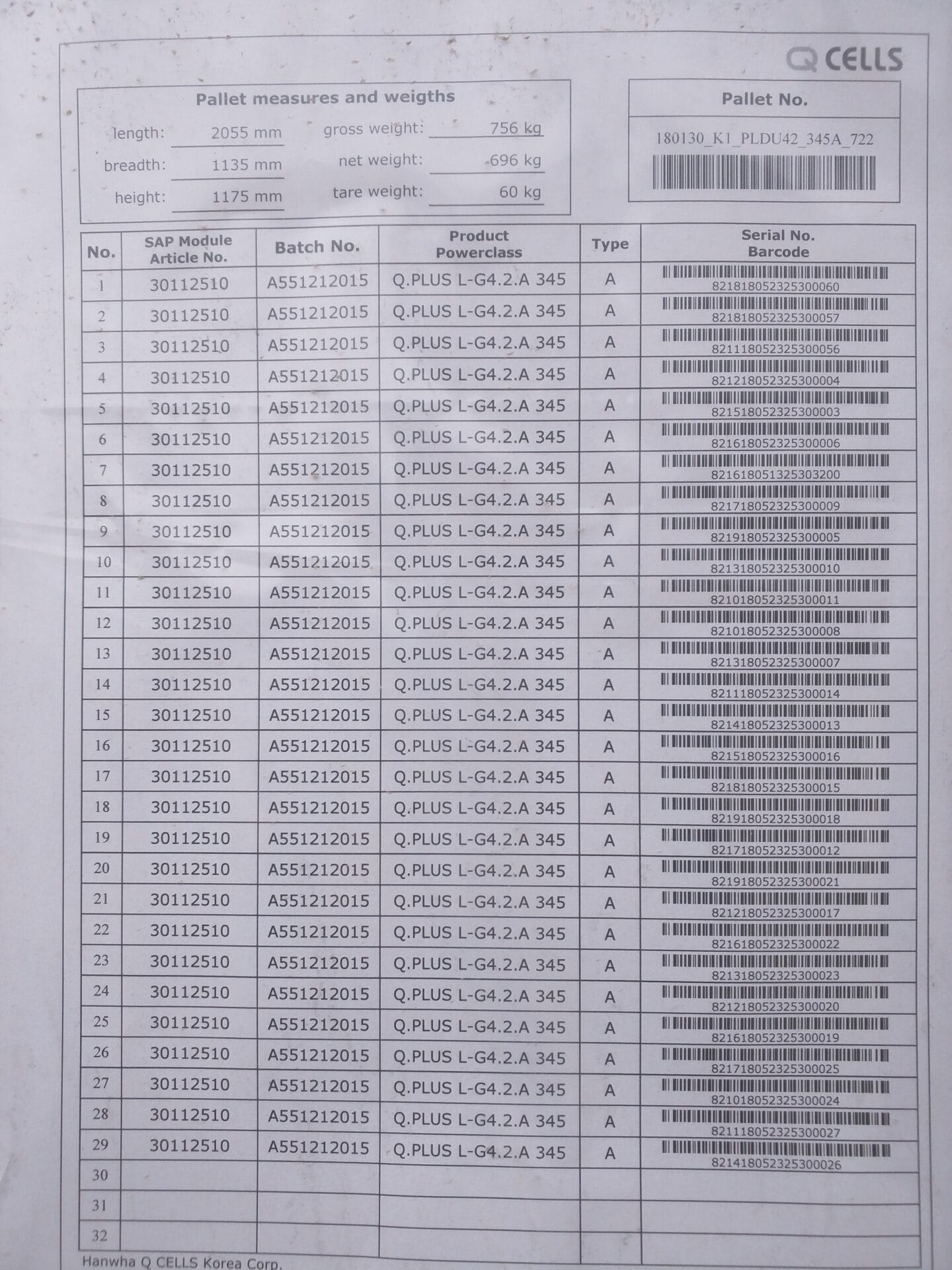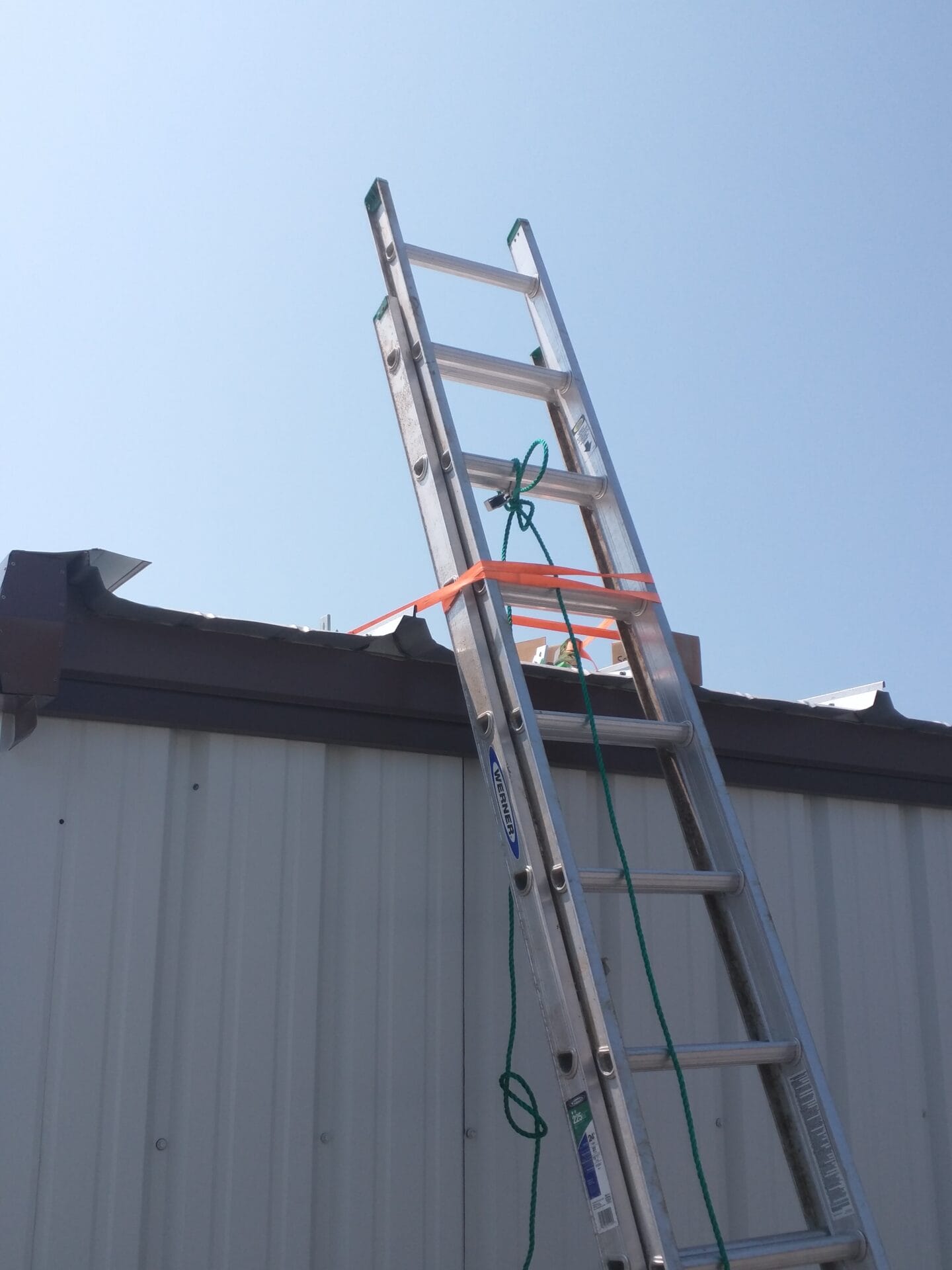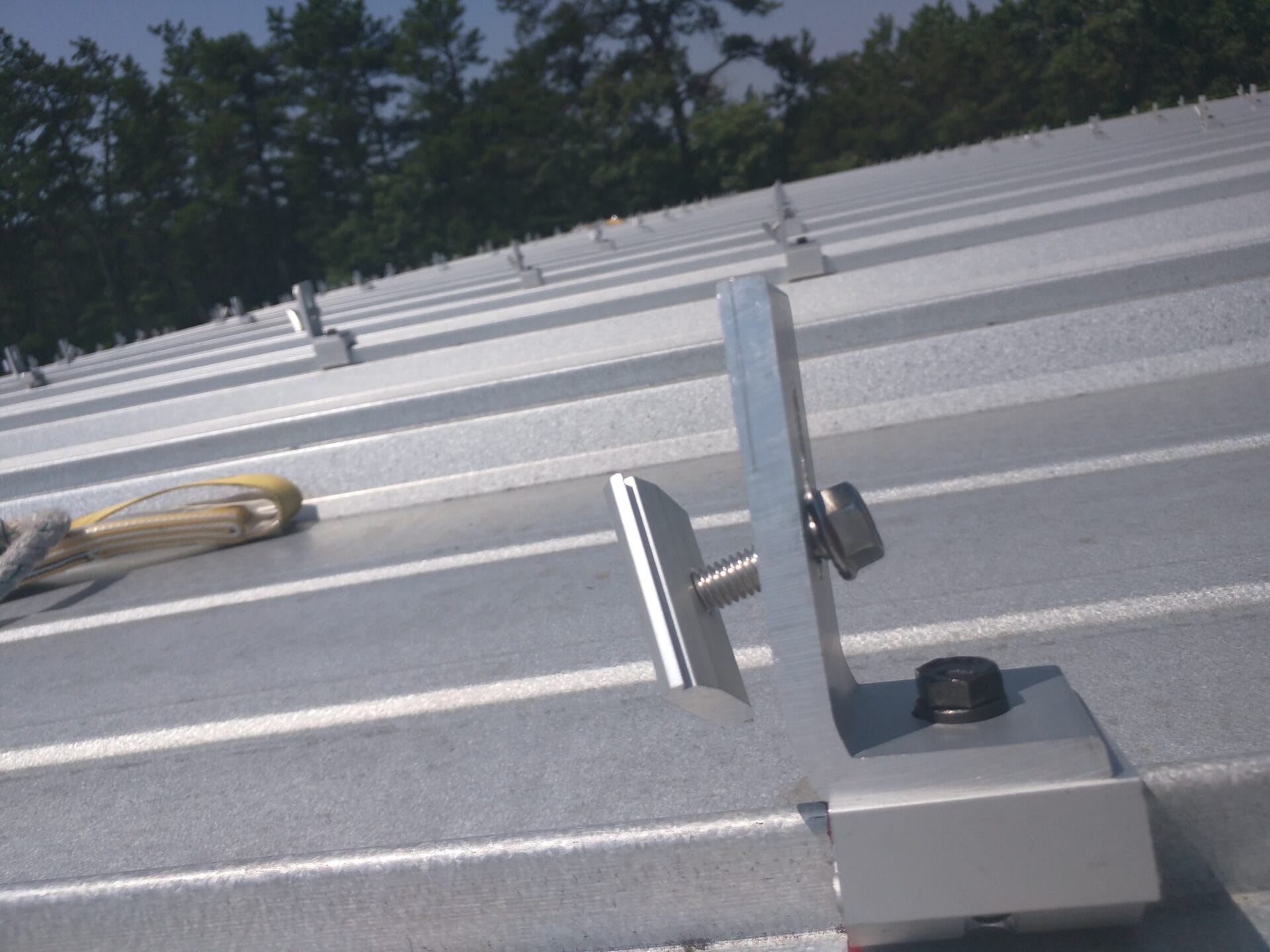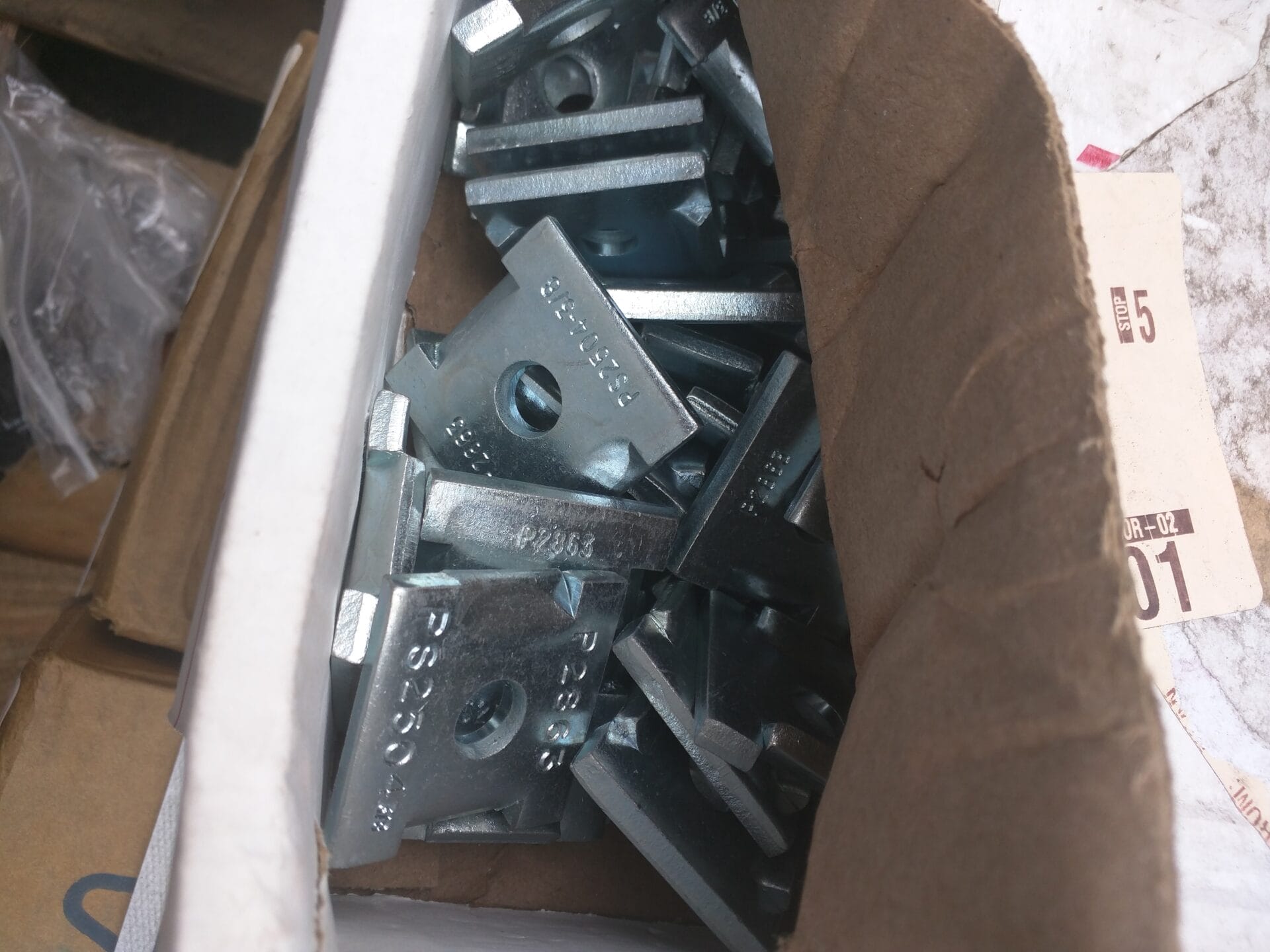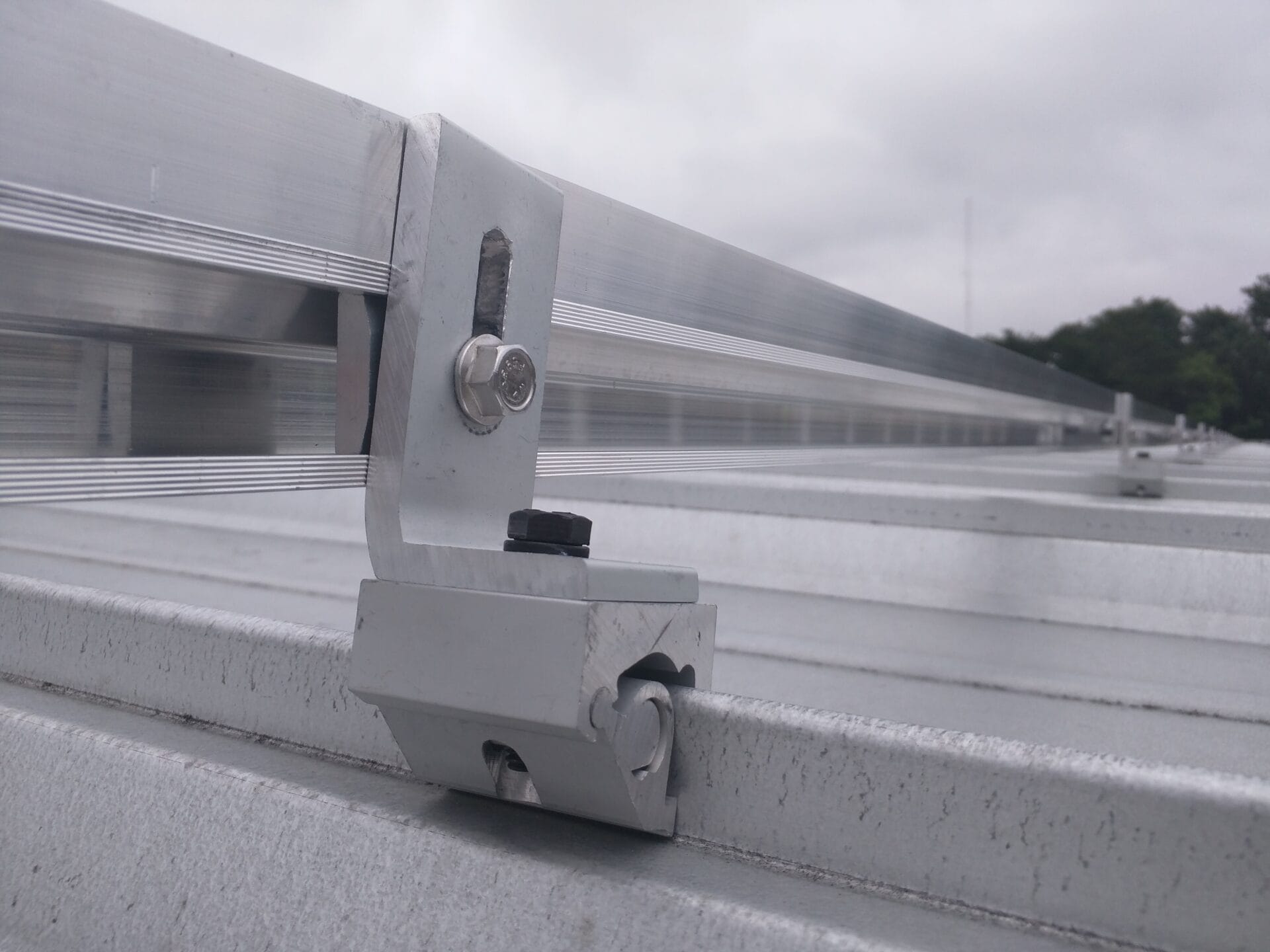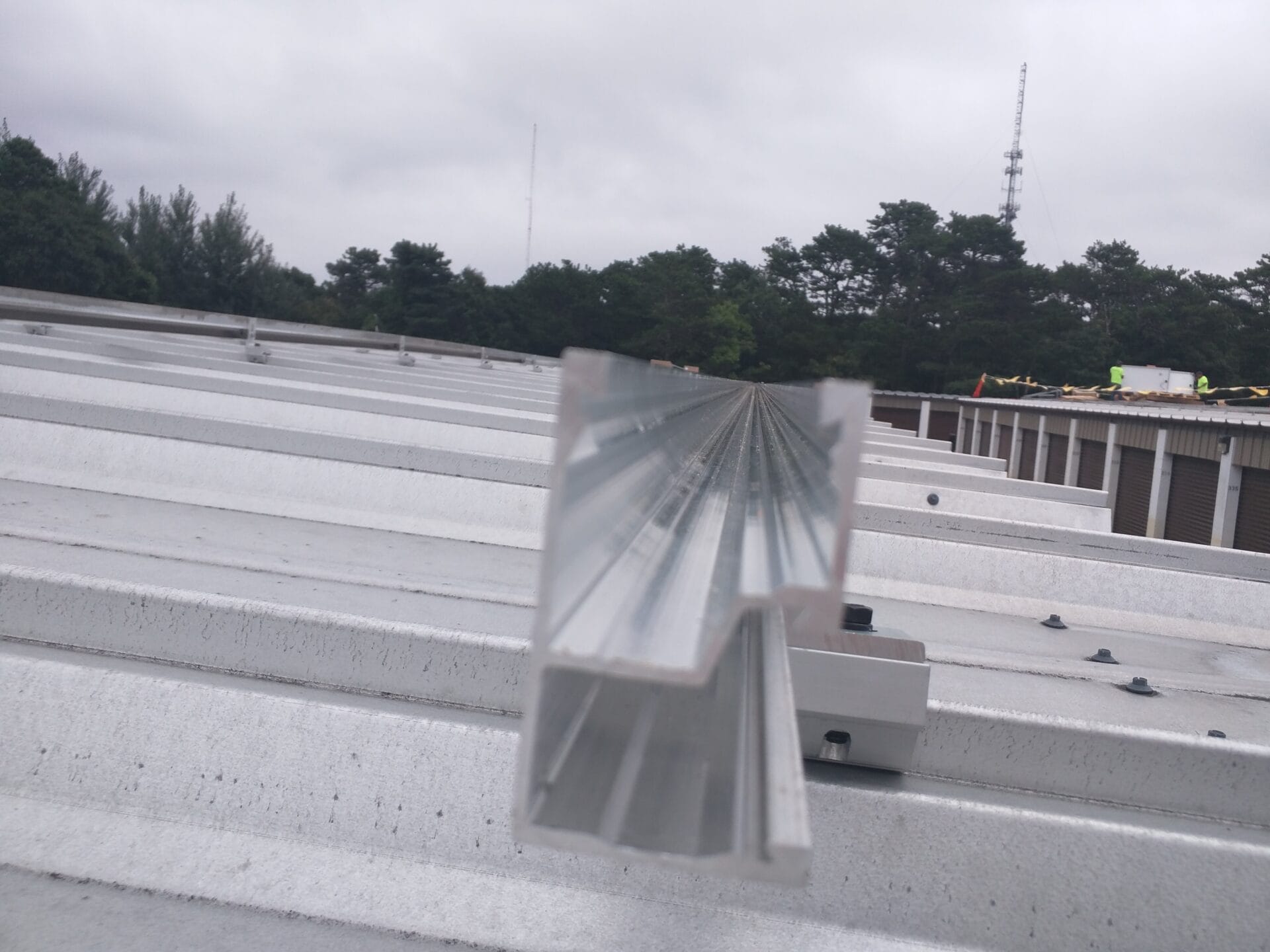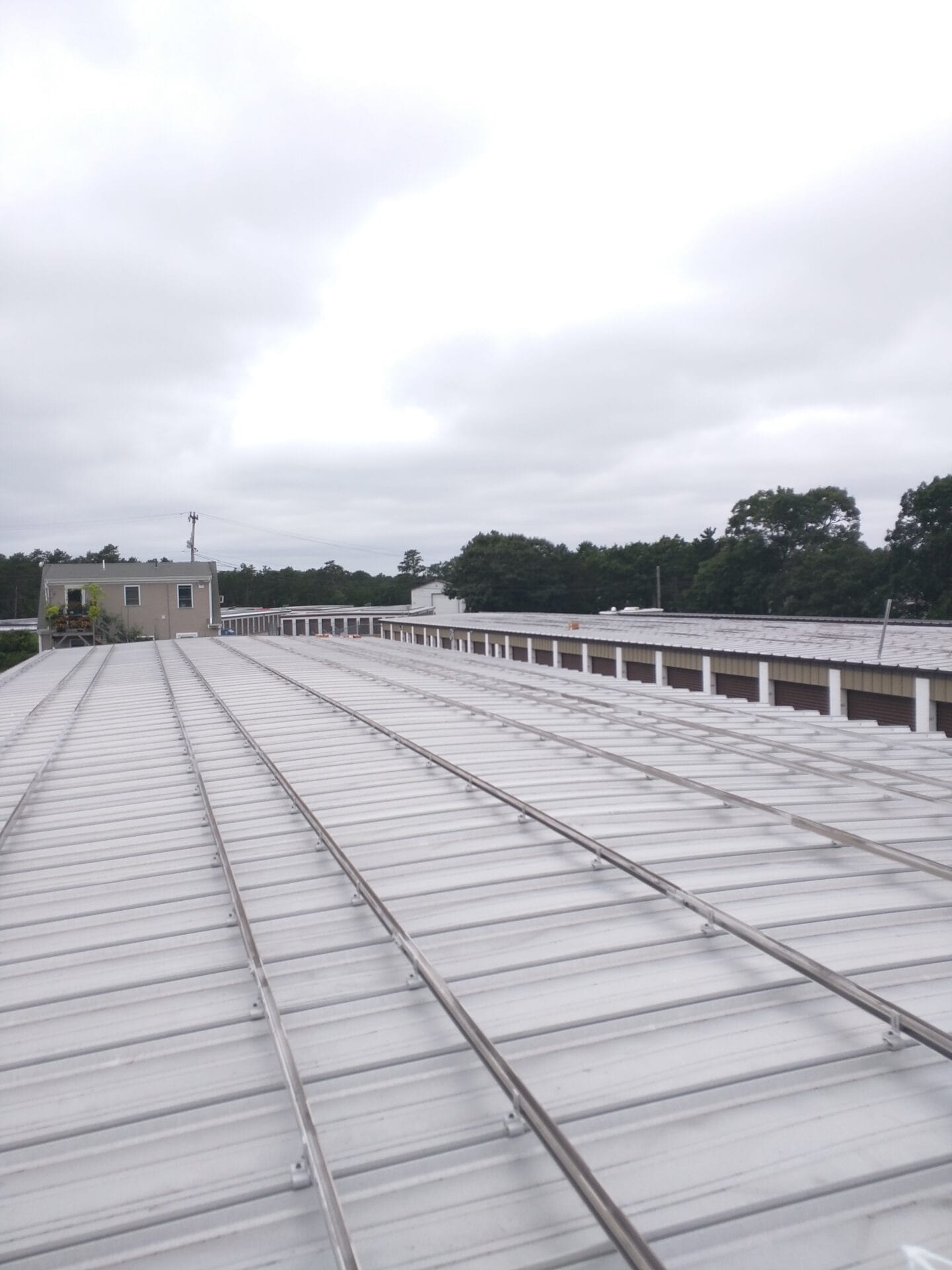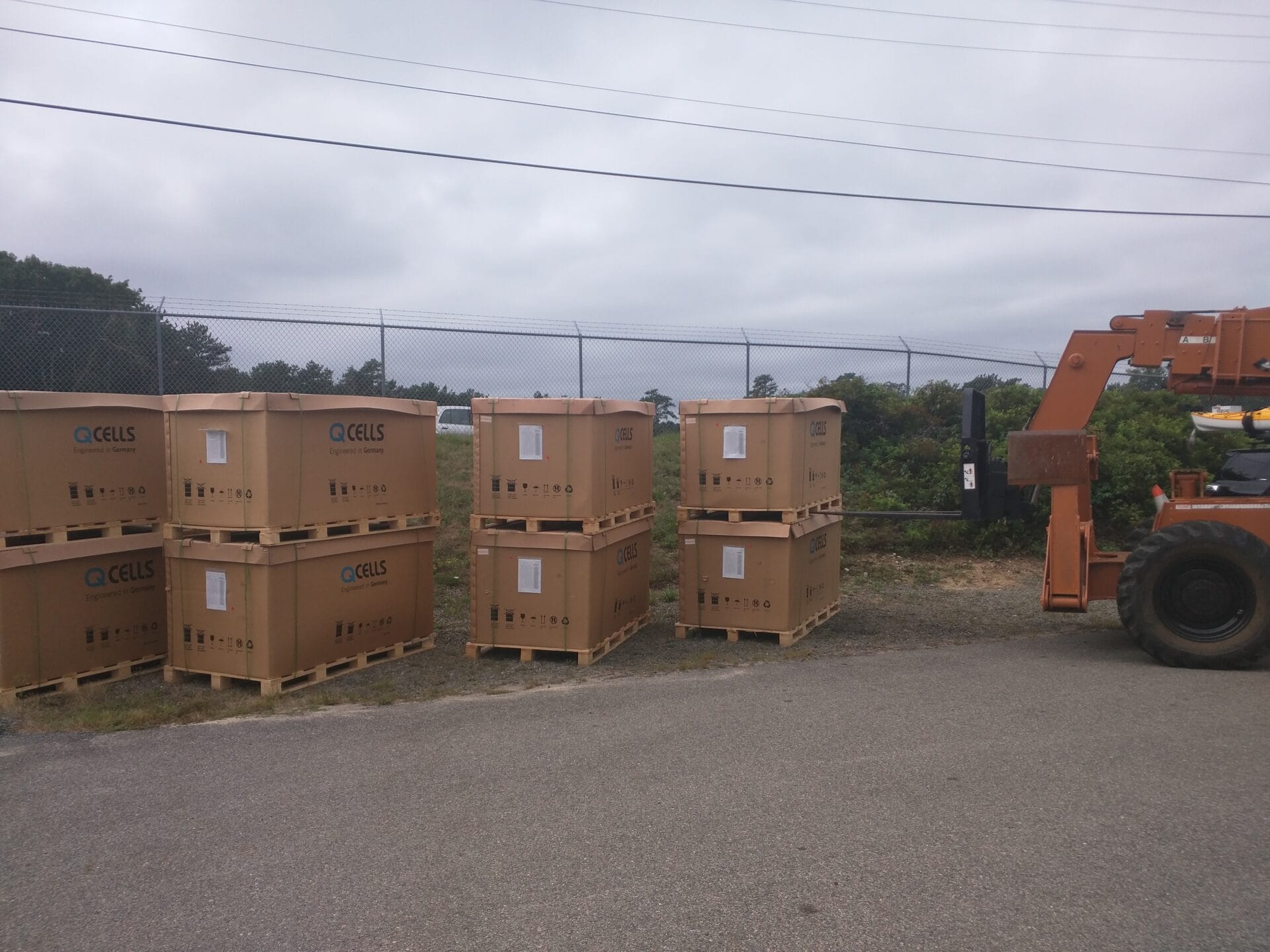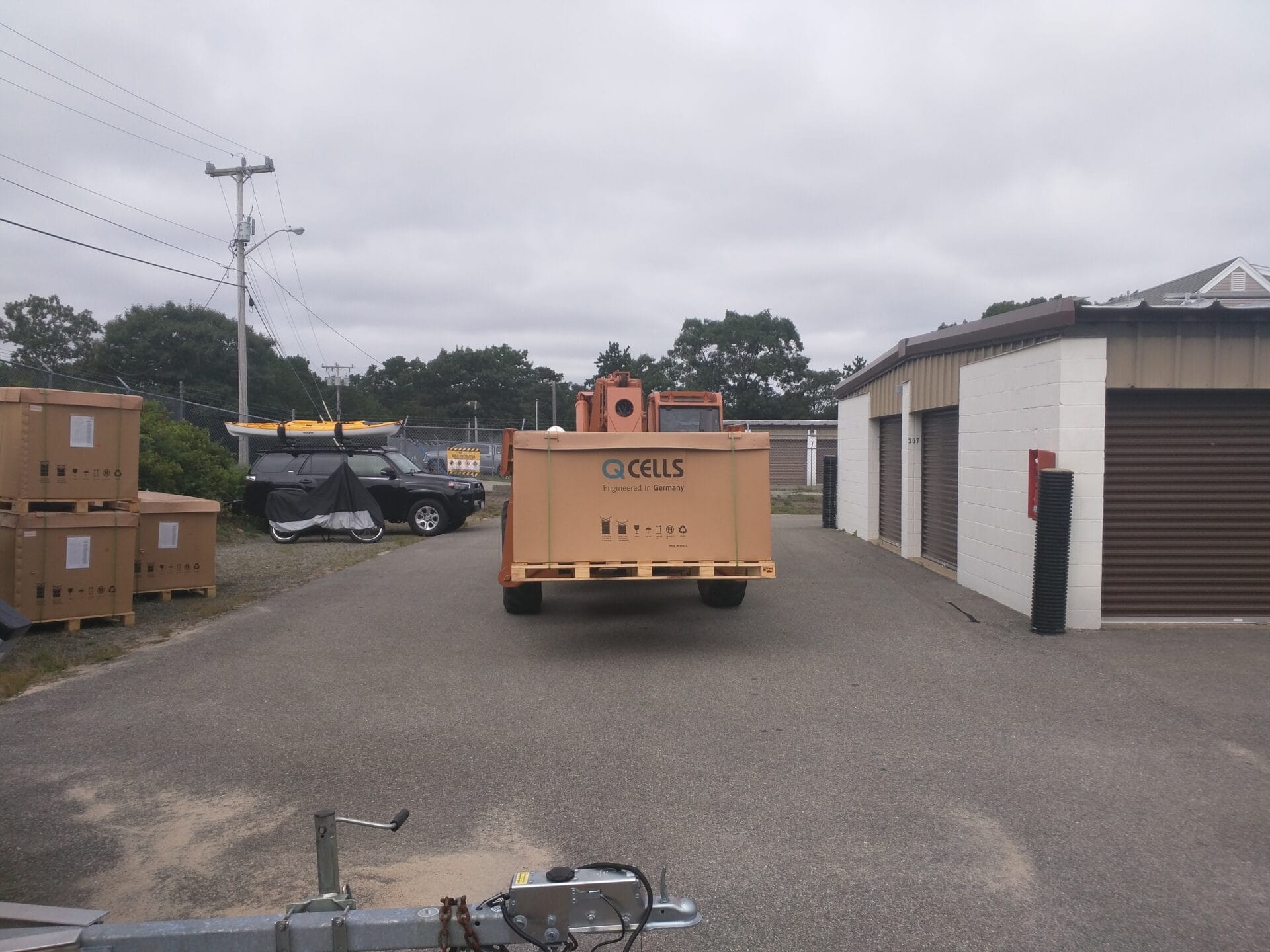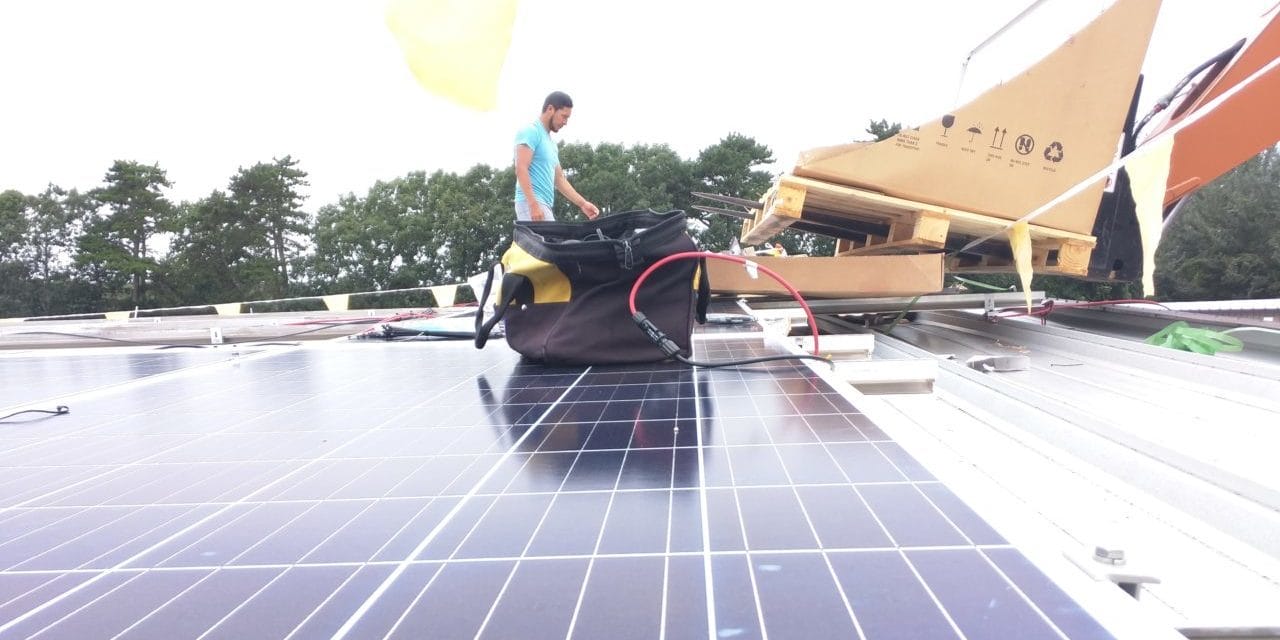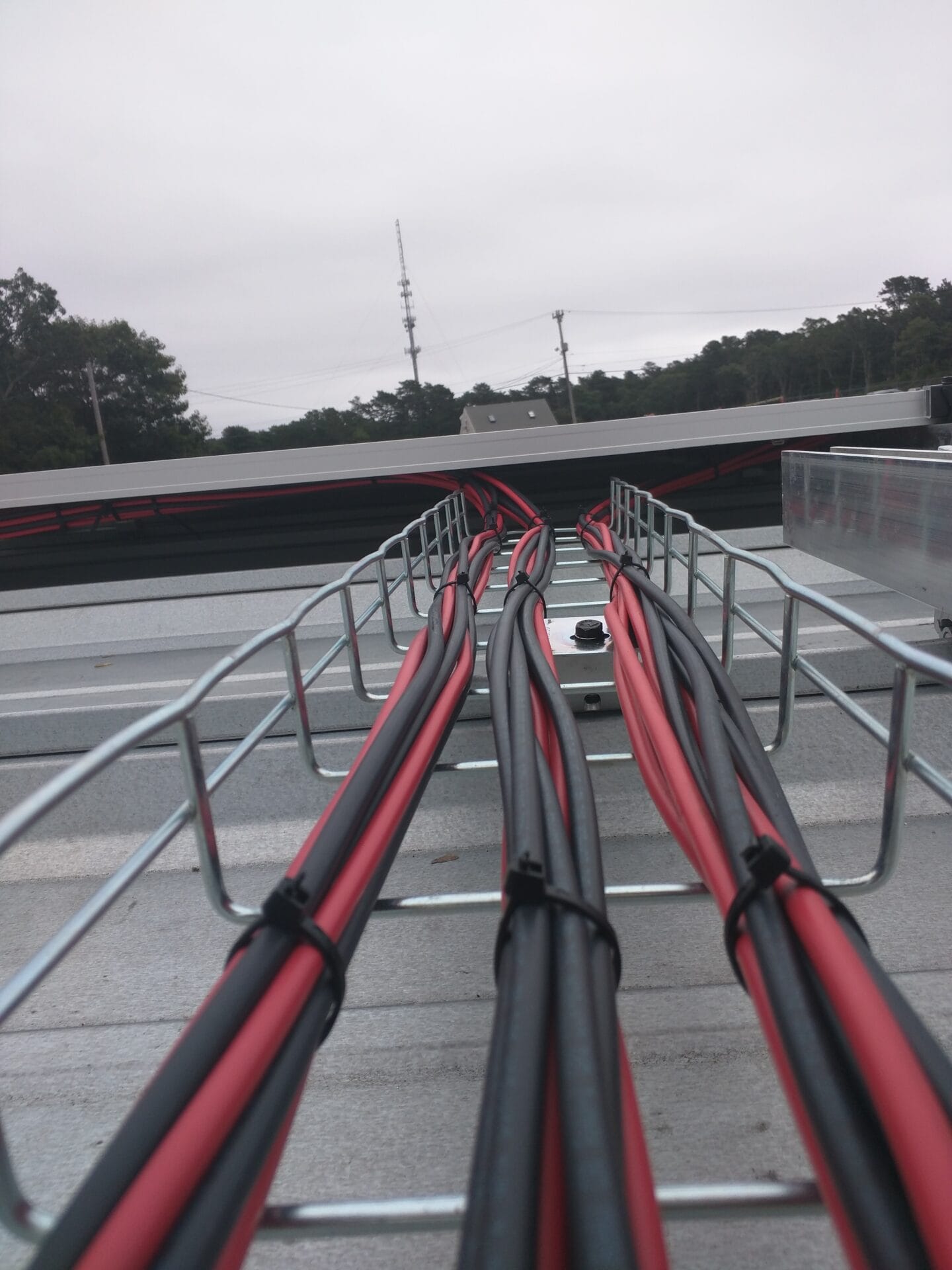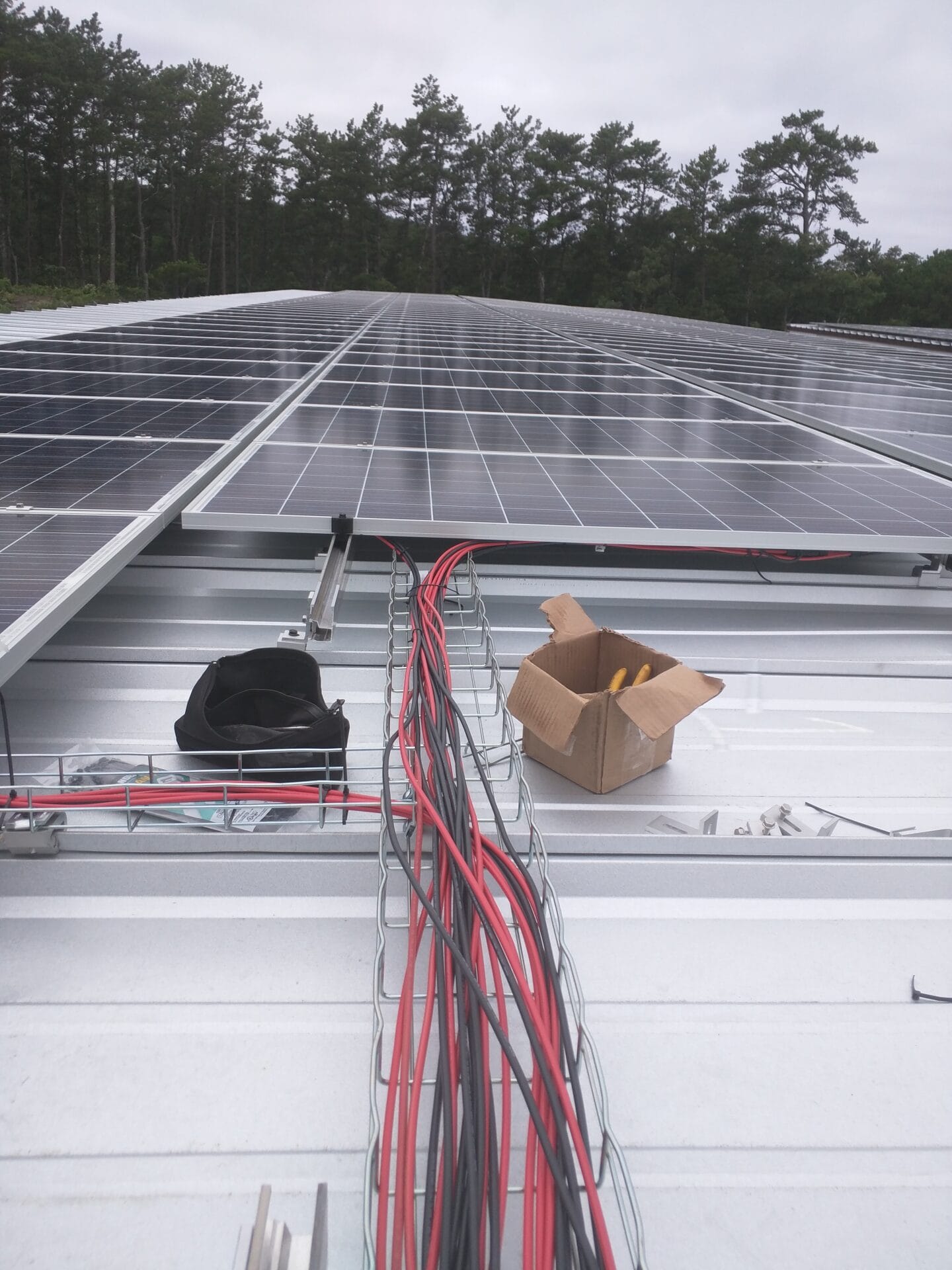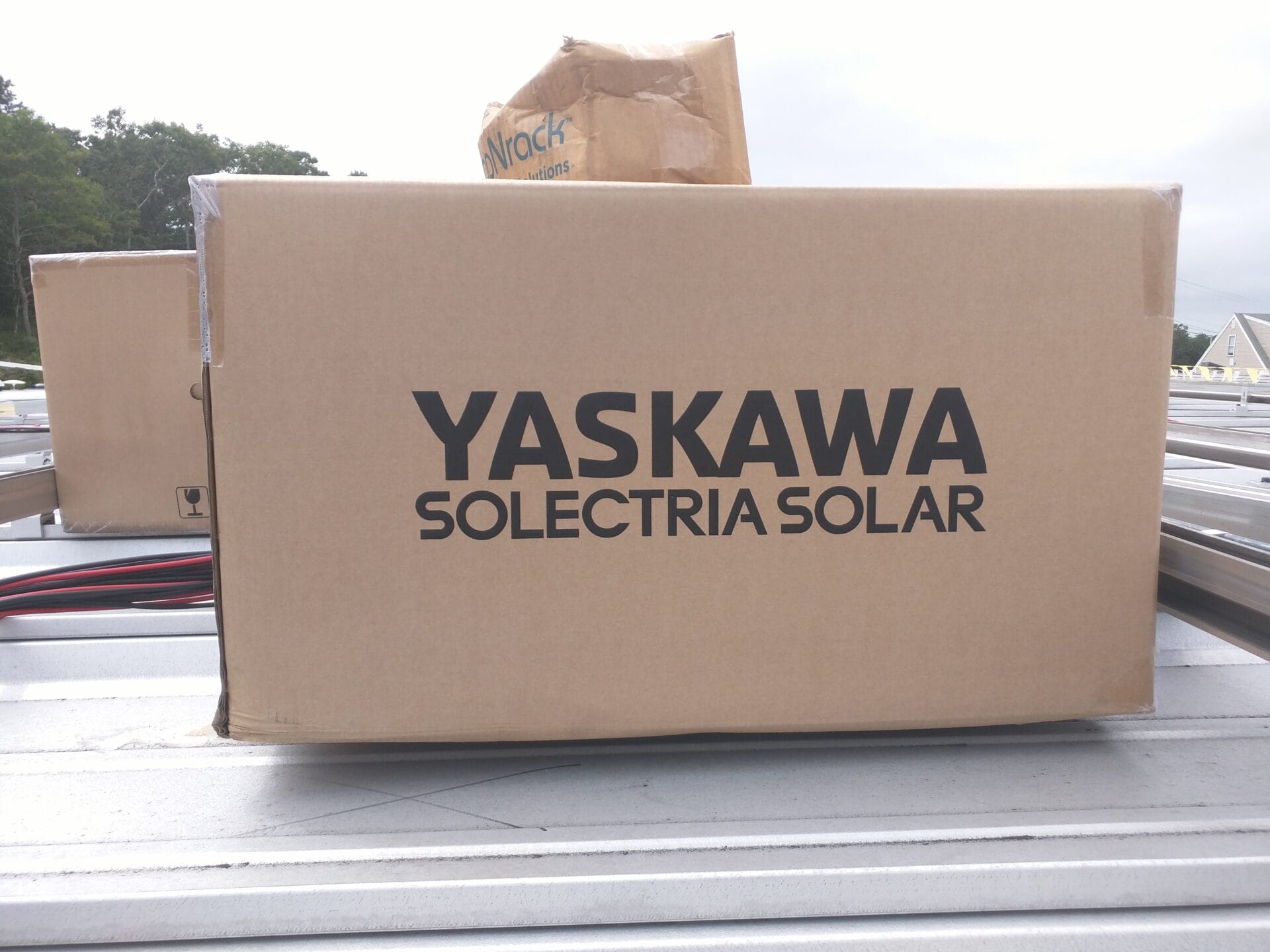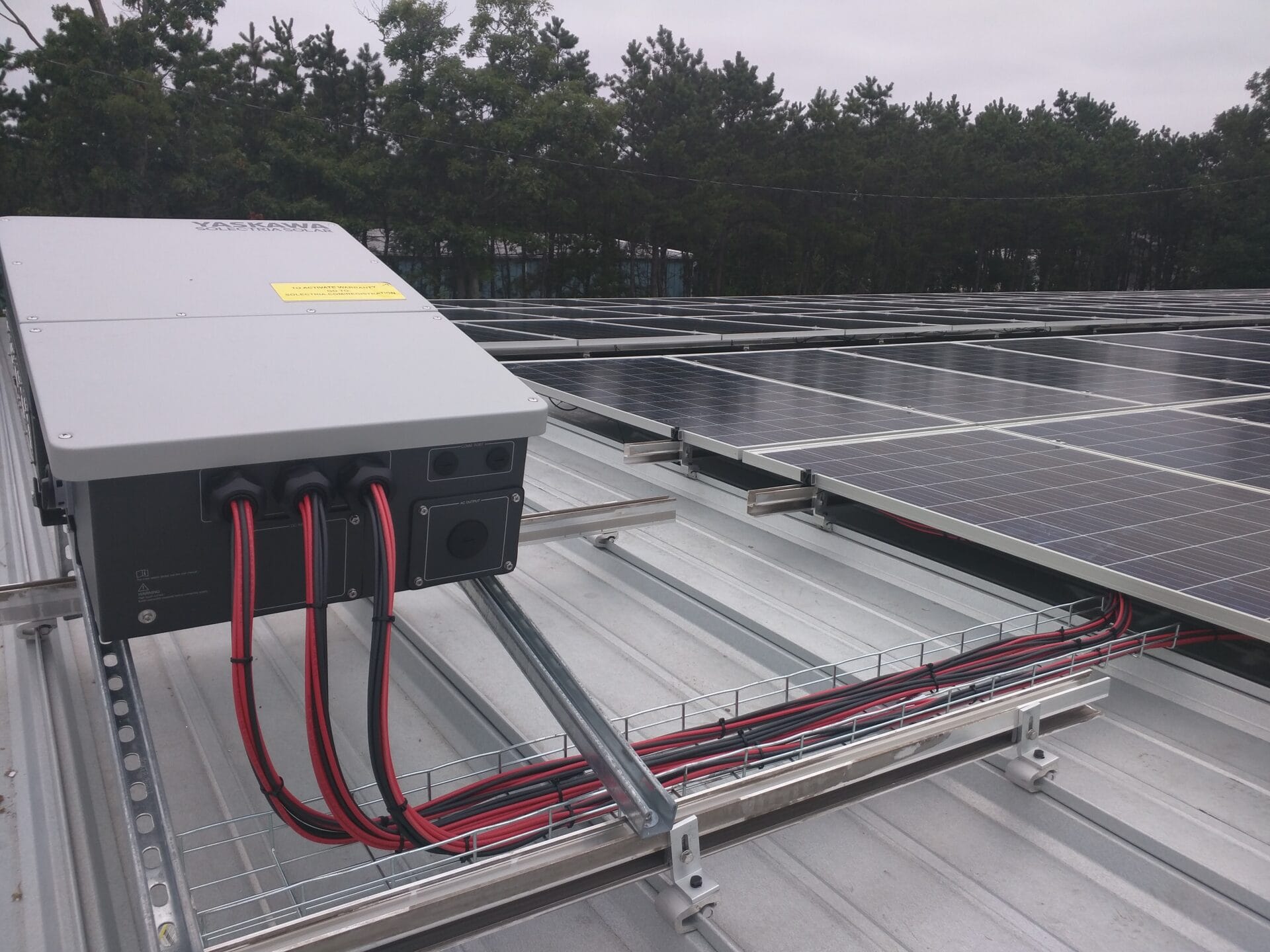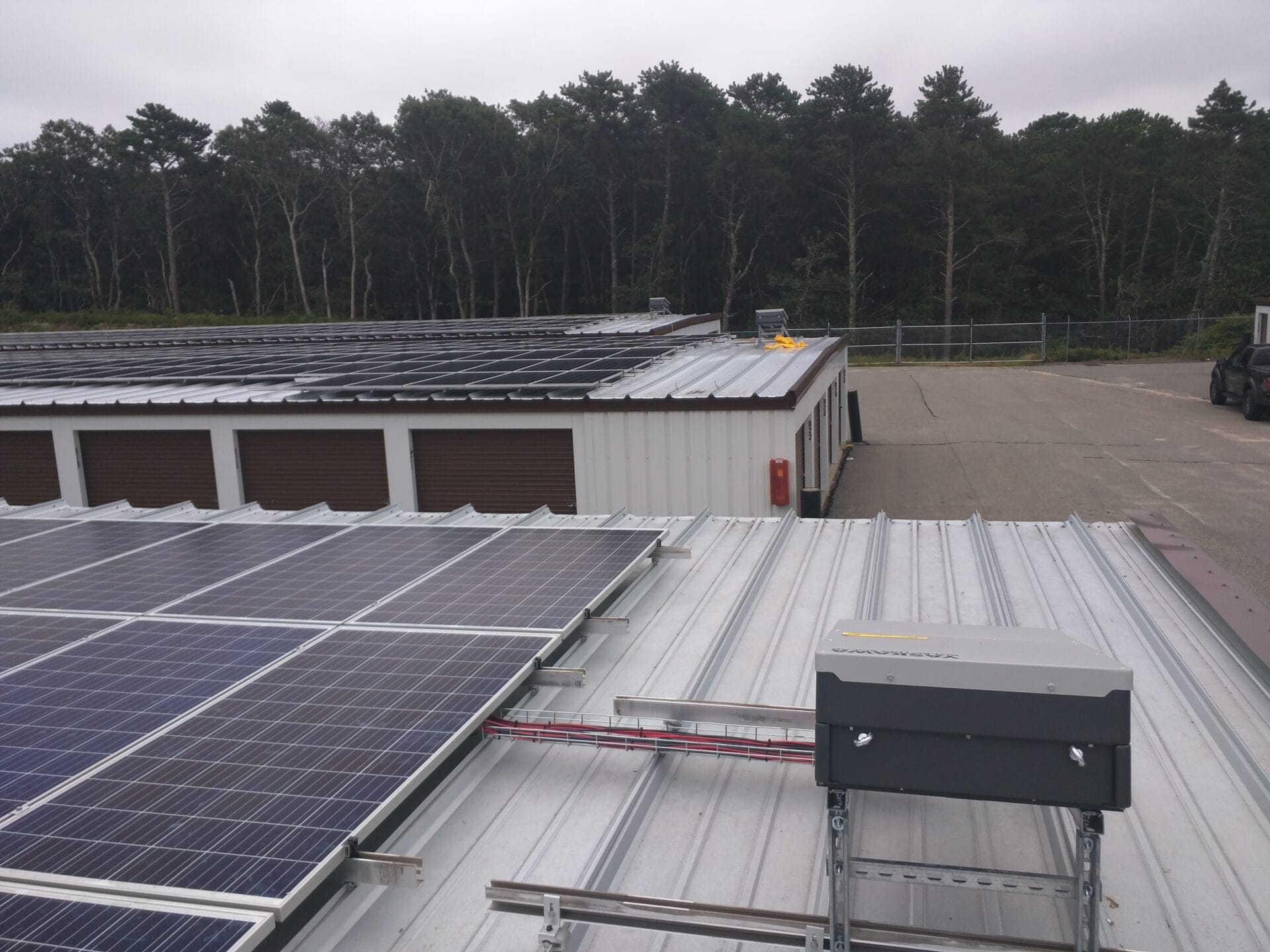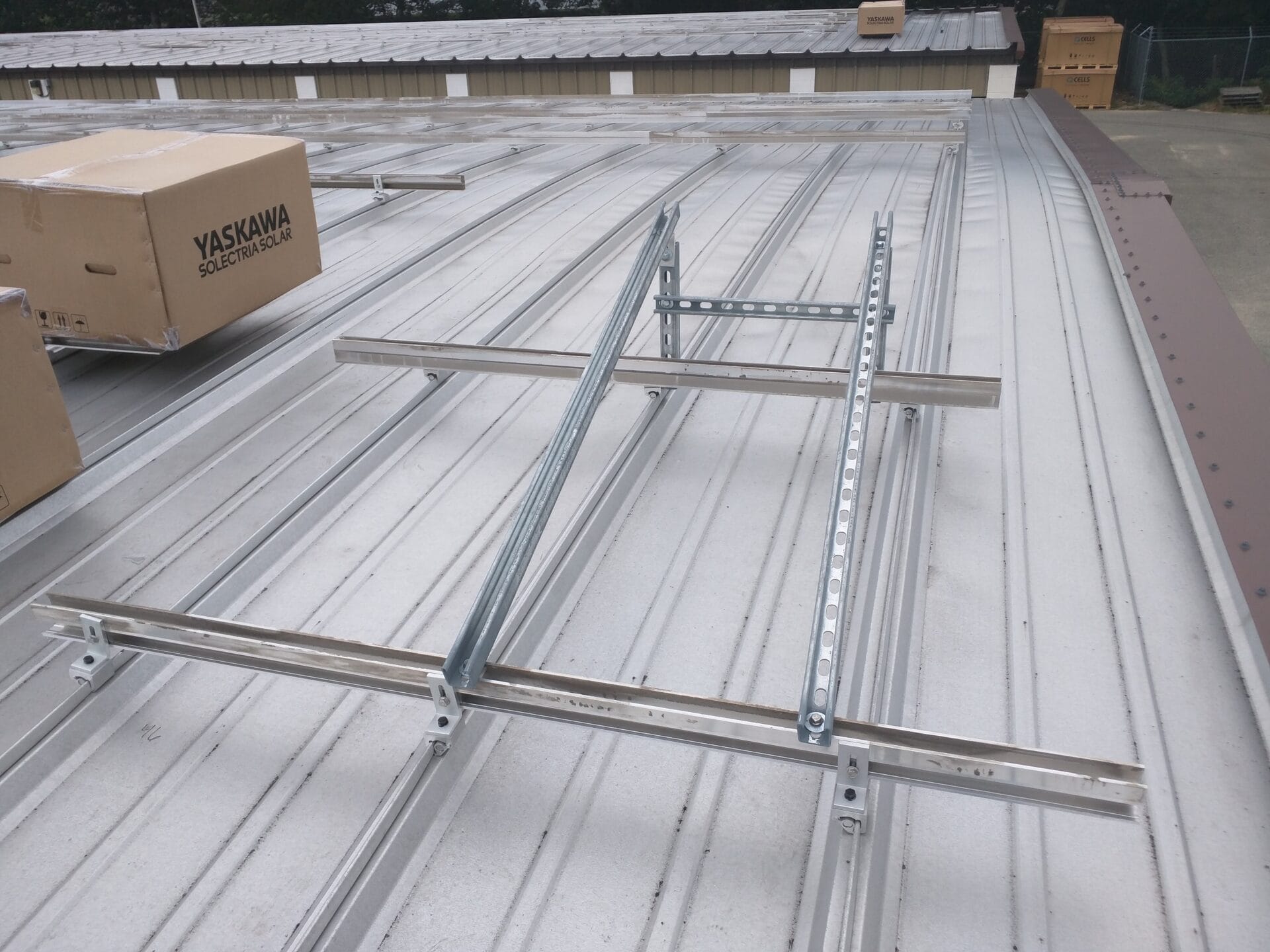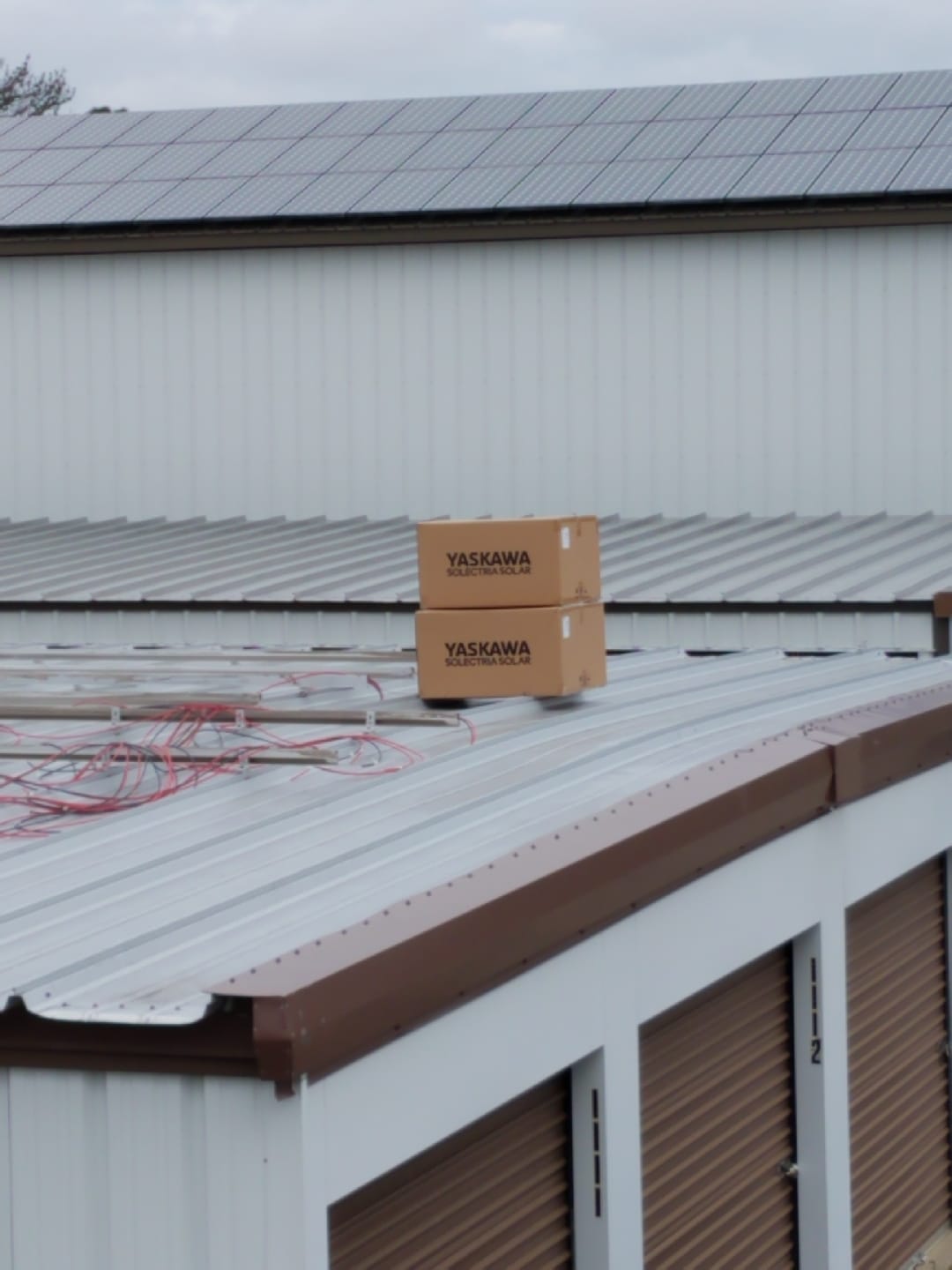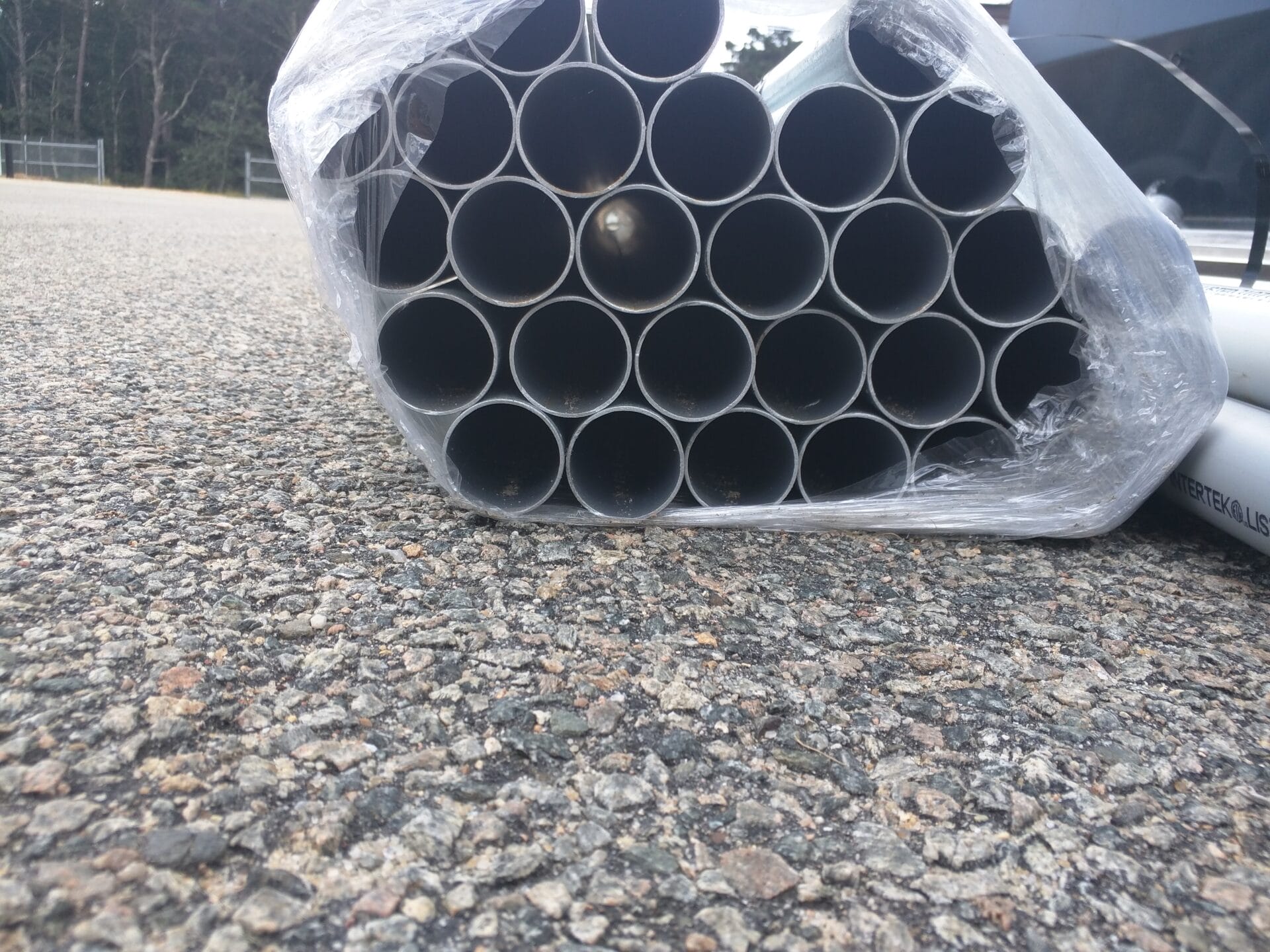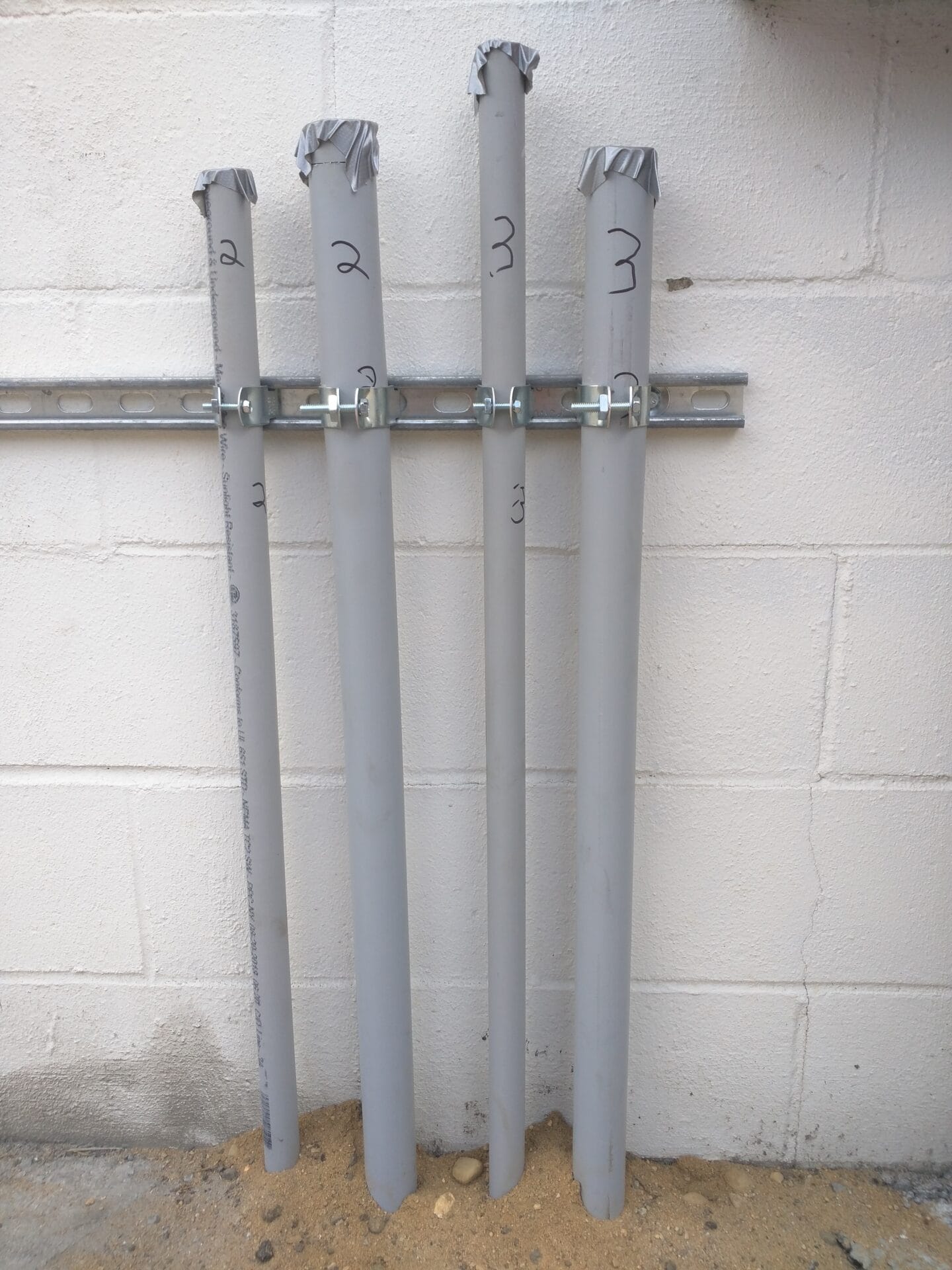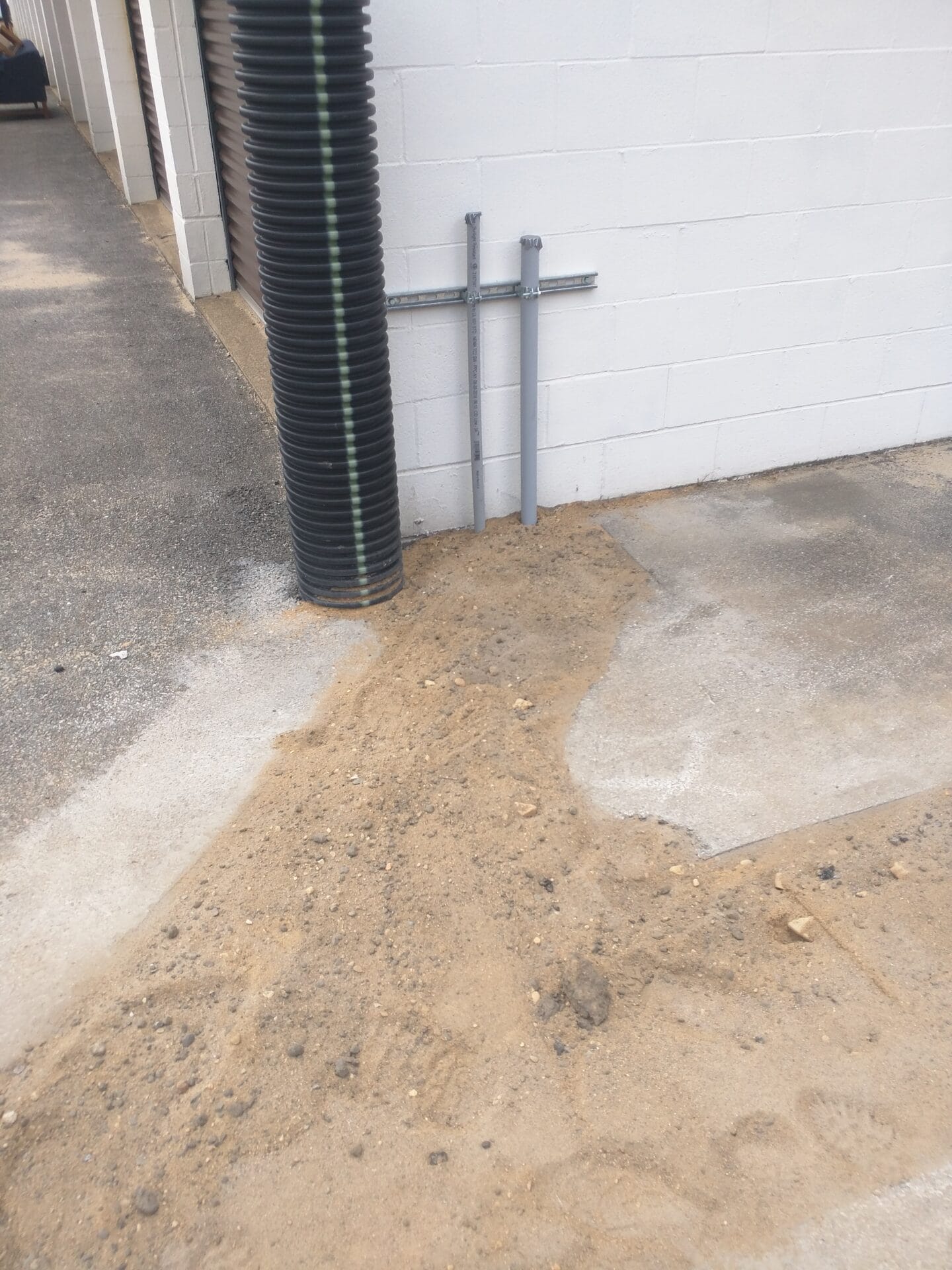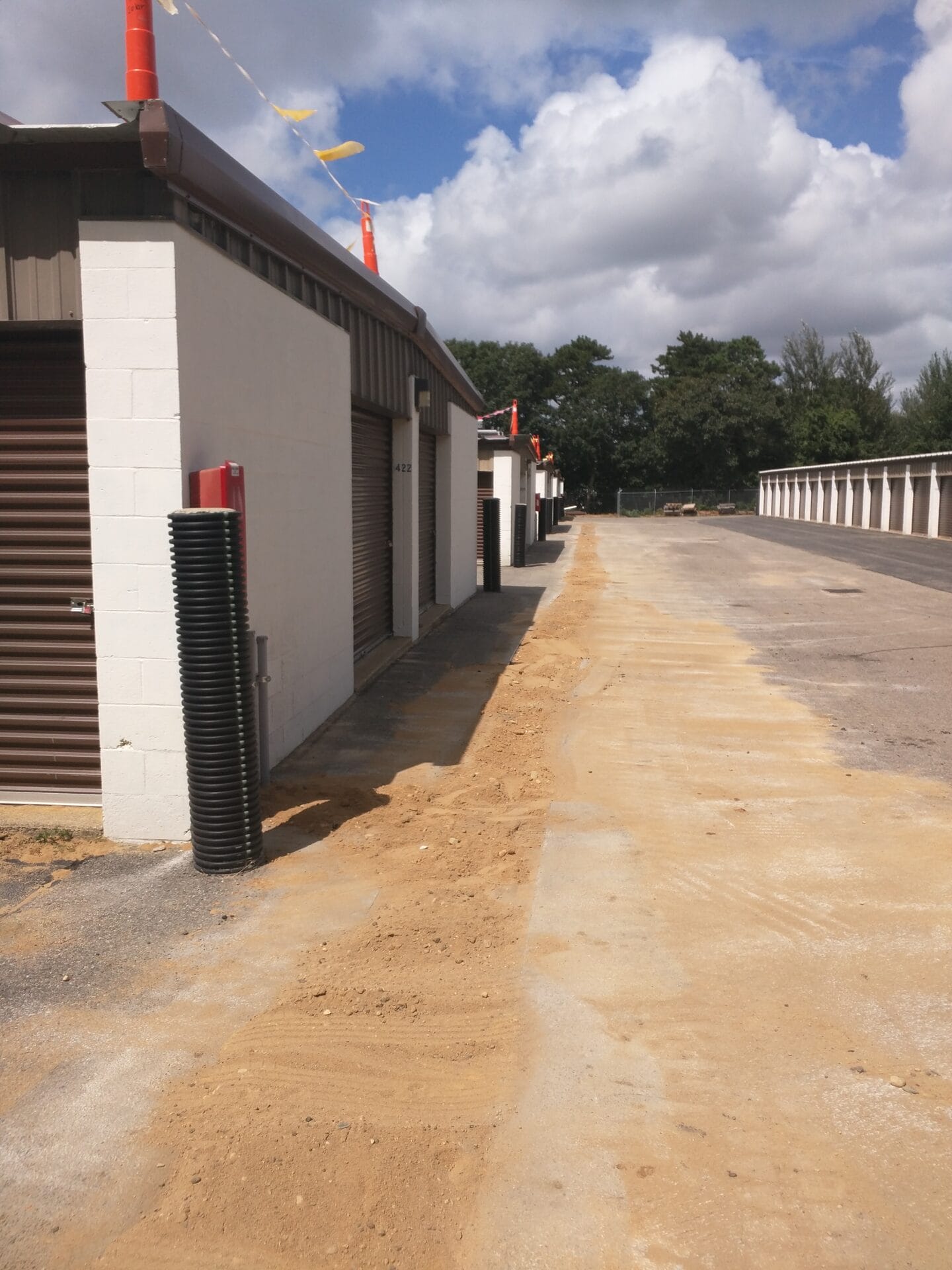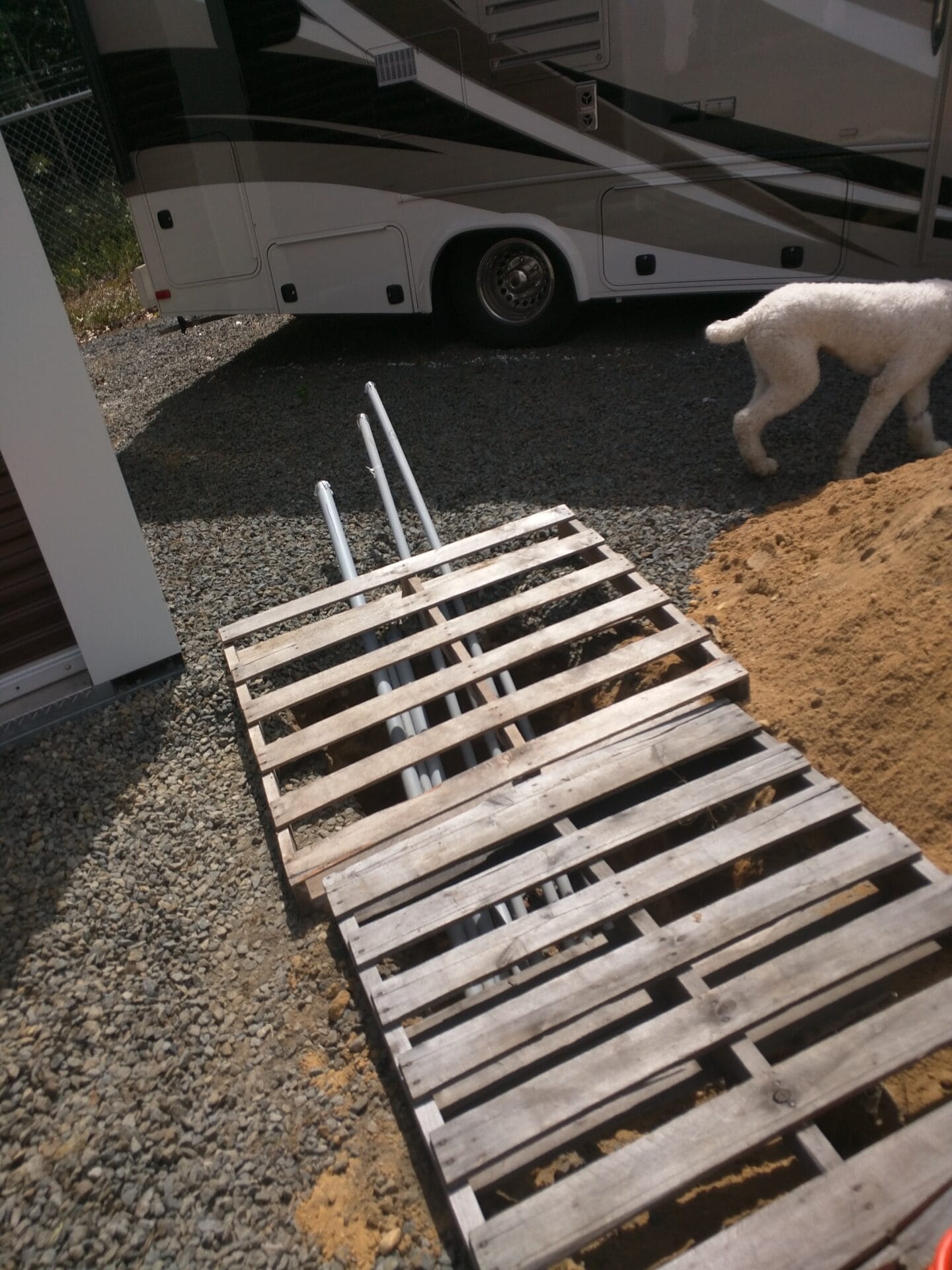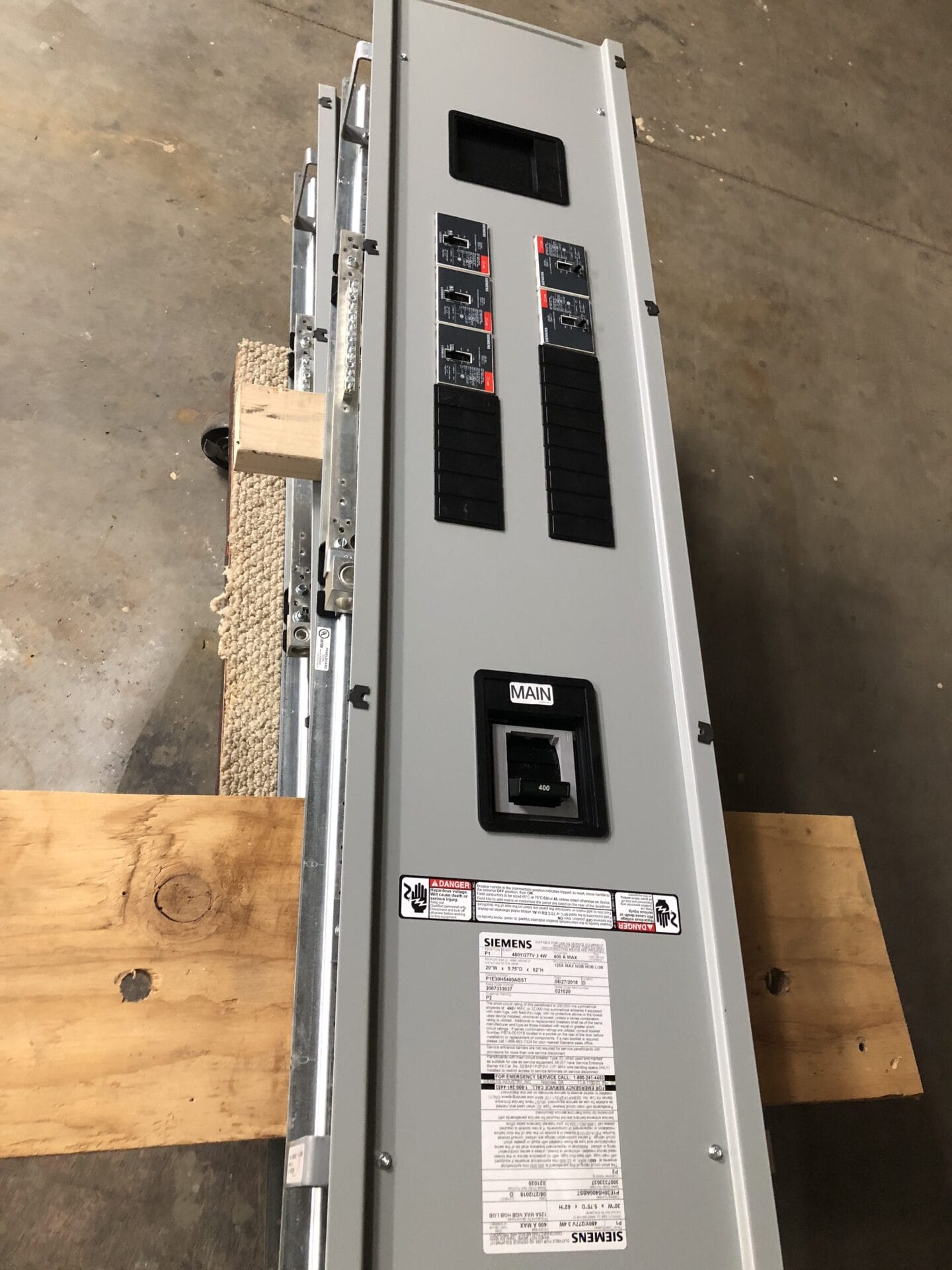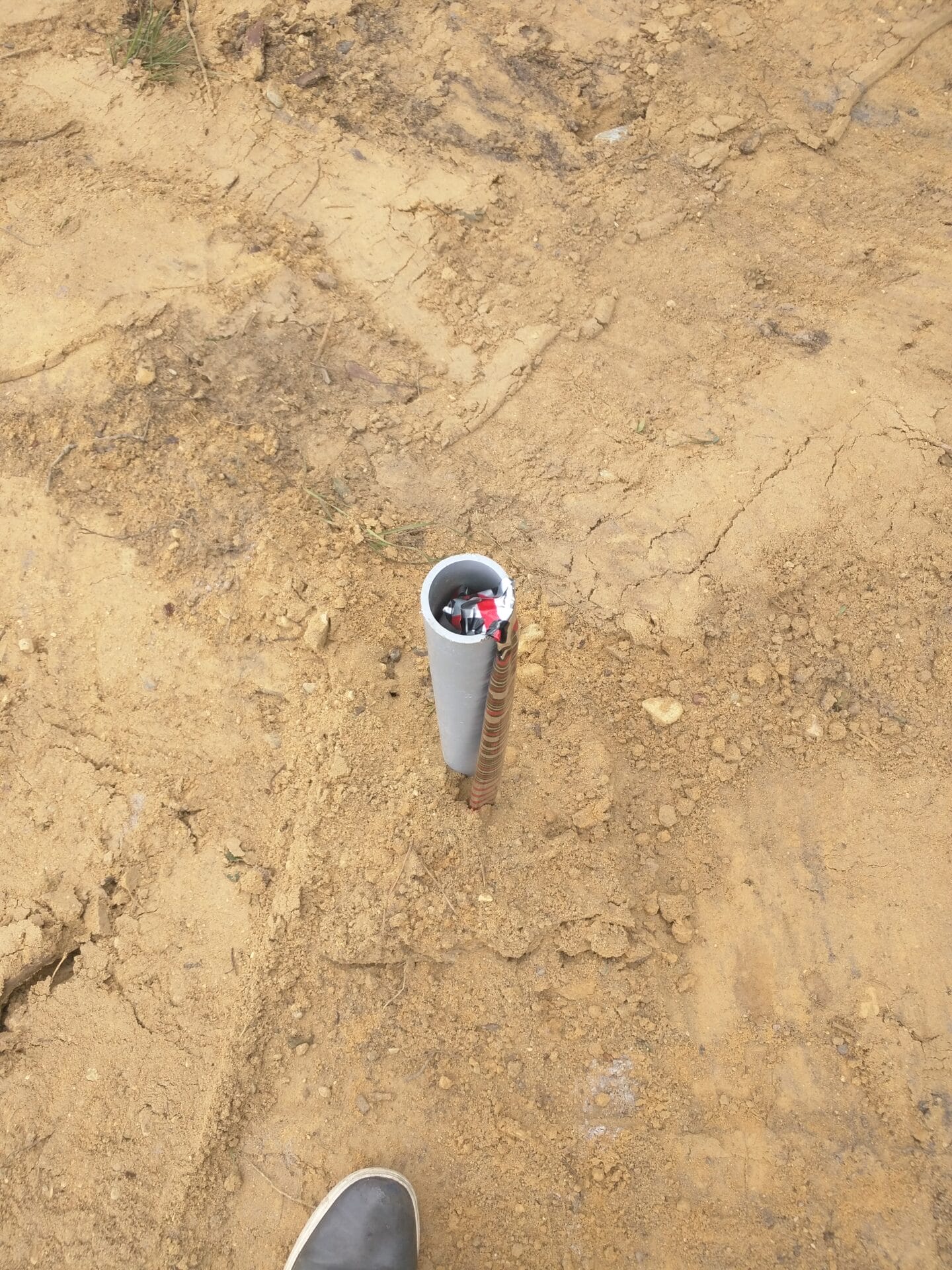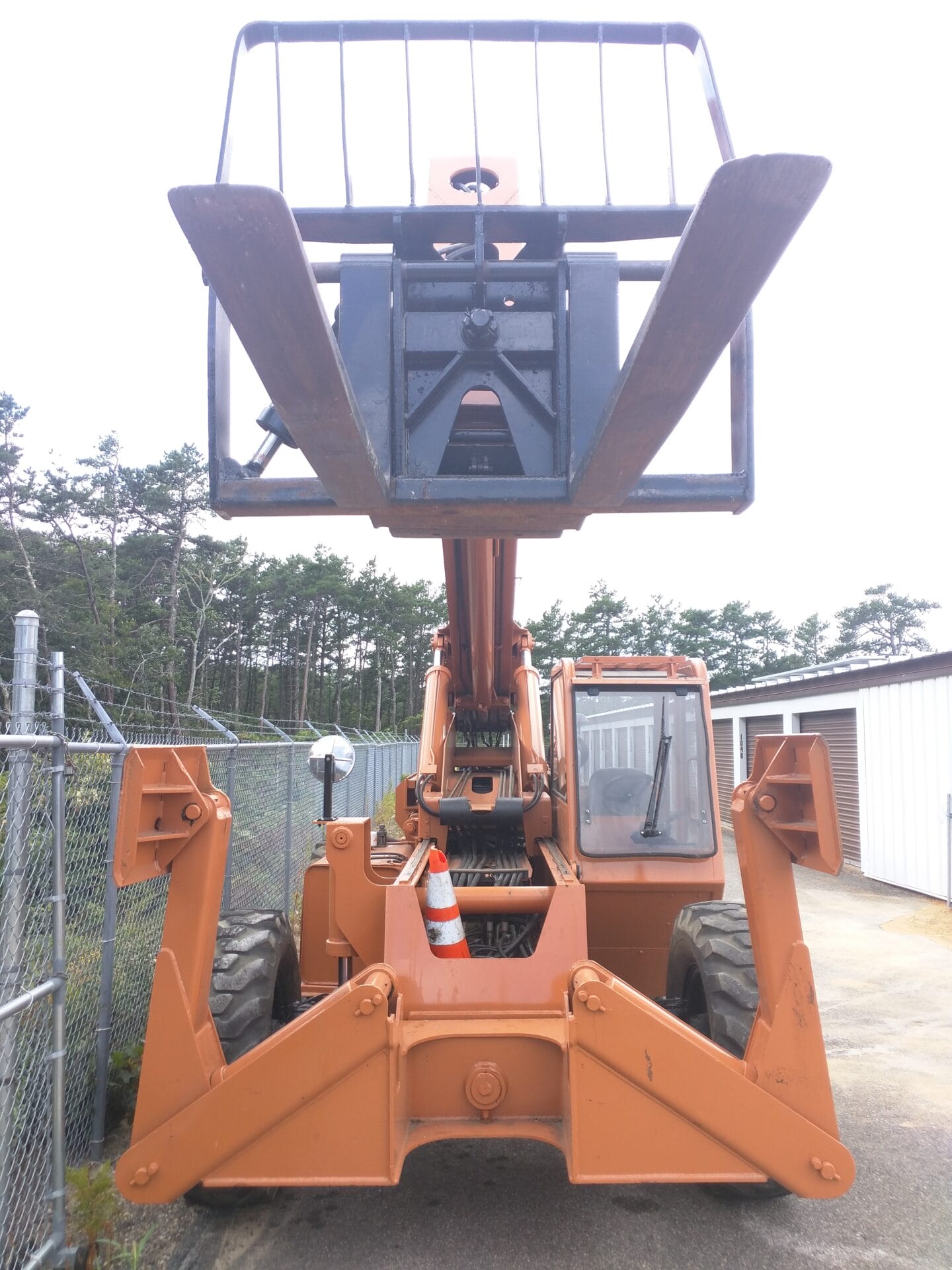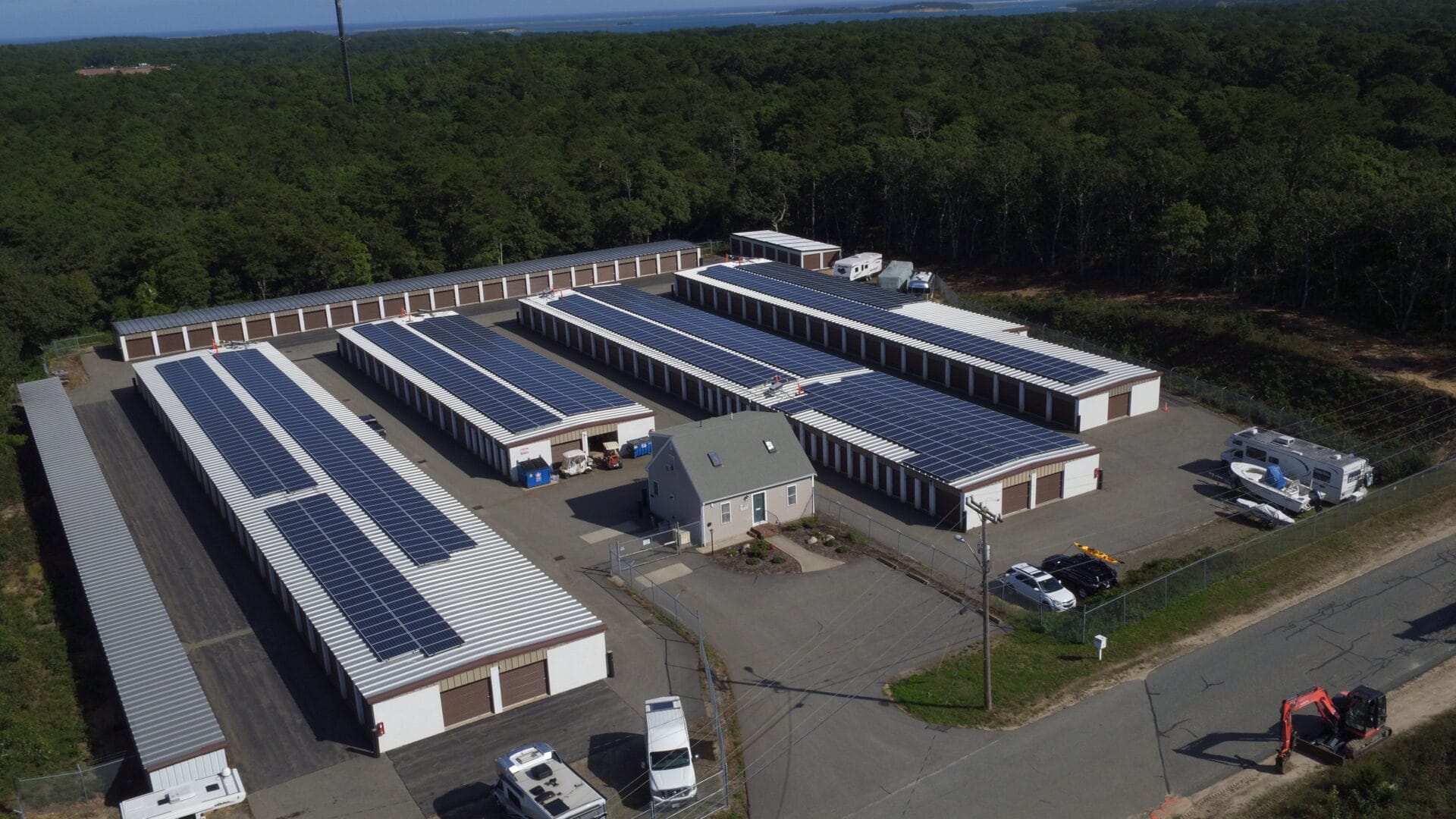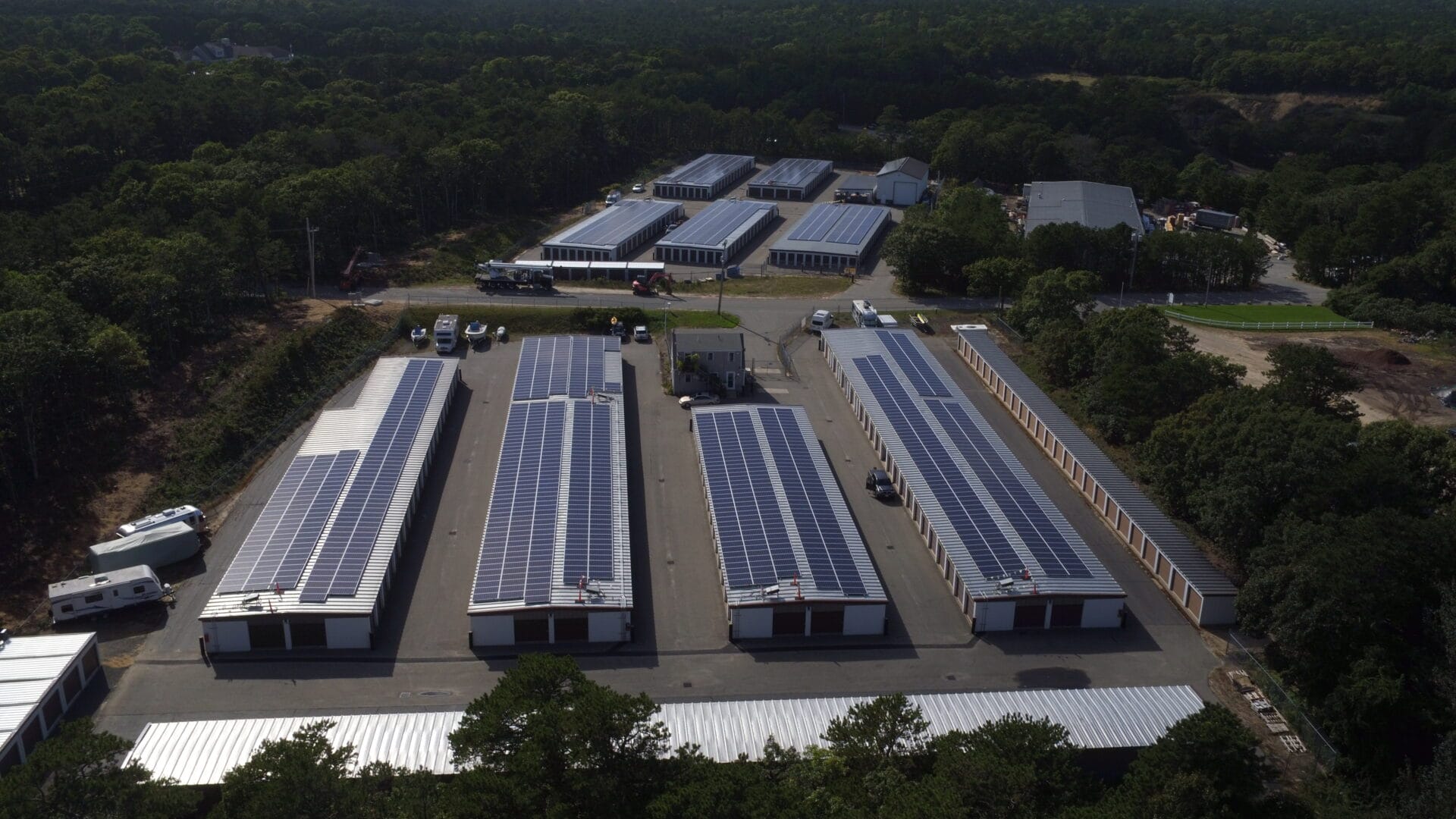Commercial Solar Panel Installation Step by Step
Step 1 – Feasibility Analysis: Solar power on self storage in Massachusetts
Jump to – “Step 2 – Solar Tax Credits & Interconnection“
Jump to – “Step 3 – Understanding Commercial Solar Panel Installation“
For this project, first we do a feasibility analysis in this article, then we move onto a deeper financial and power grid analysis, before we show how we actually install the system. Installing solar panels for commercial buildings is a complex process, but the work pays off. Commercial Solar Guy helped Secure Storage install 2,006 solar panels on top of their self storage location in Brewster, Massachusetts. When Seamus – the owner of the company – reached out, they were looking to better understand the cost of a system, the incentives, and how much they would save. As part of the Massachusetts SMART program – we knew that they’d get a 20 year contract with the utility to buy their electricity at a fixed price. Commercial Solar Guy offered peace of mind as we developed the project from an idea to a final installation. Secure Storage installed a small solar system back in 2009, and were very happy with it. Now they wanted a system large enough to make use of their whole structure – tens of thousands of square rooftop that they weren’t gaining anything from.
Site Visit
First, back in the fall-winter of 2017, assuming no zoning issues and structural integrity, we visited the site to take pictures of the electrical infrastructure (powerlines, electric meters) and create our first design. We talked about how much solar power might fit on the roof, the 30% federal tax credit and the incentives from the Massachusetts SMART program.
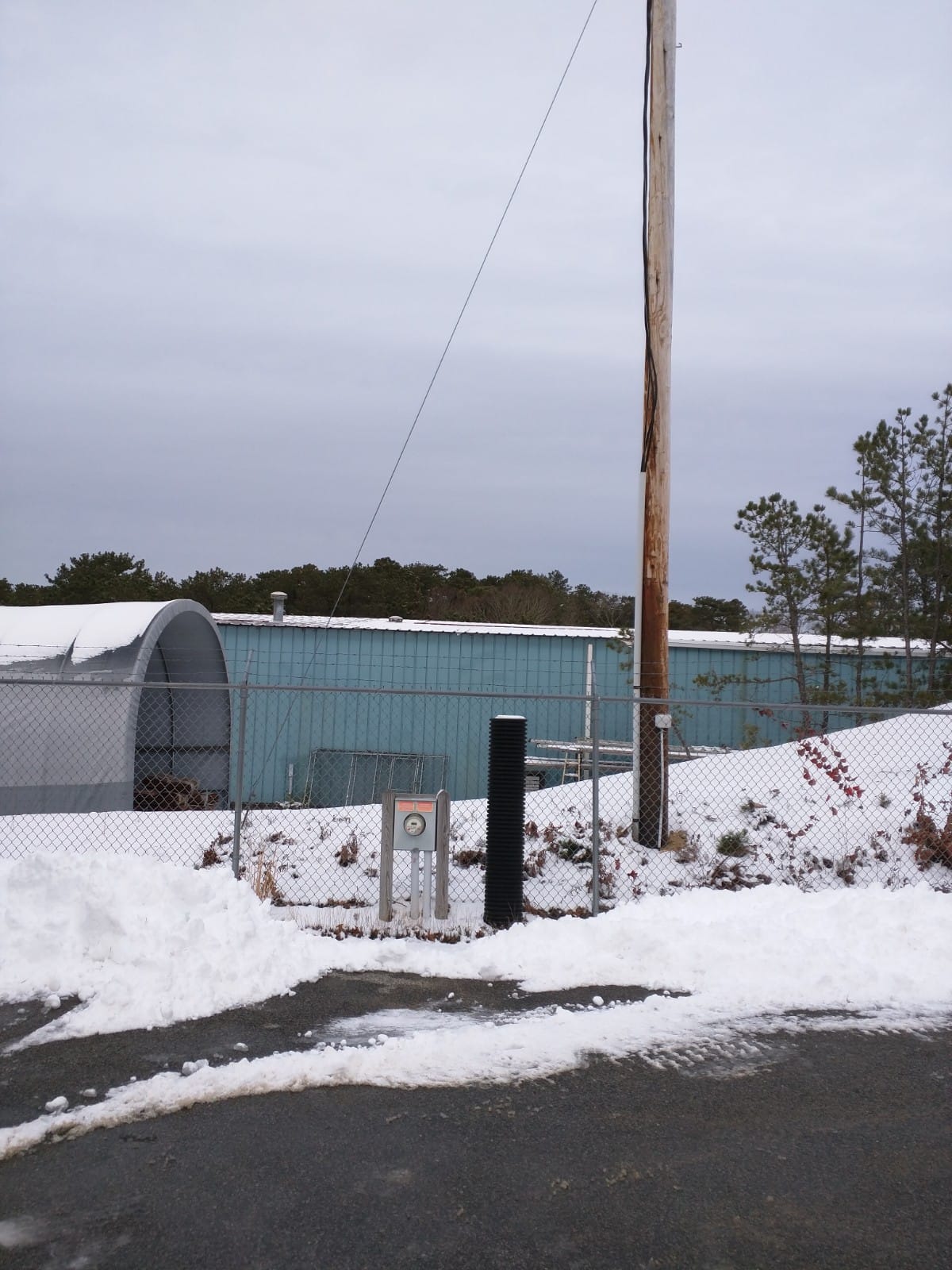
- Utility Meters and snow
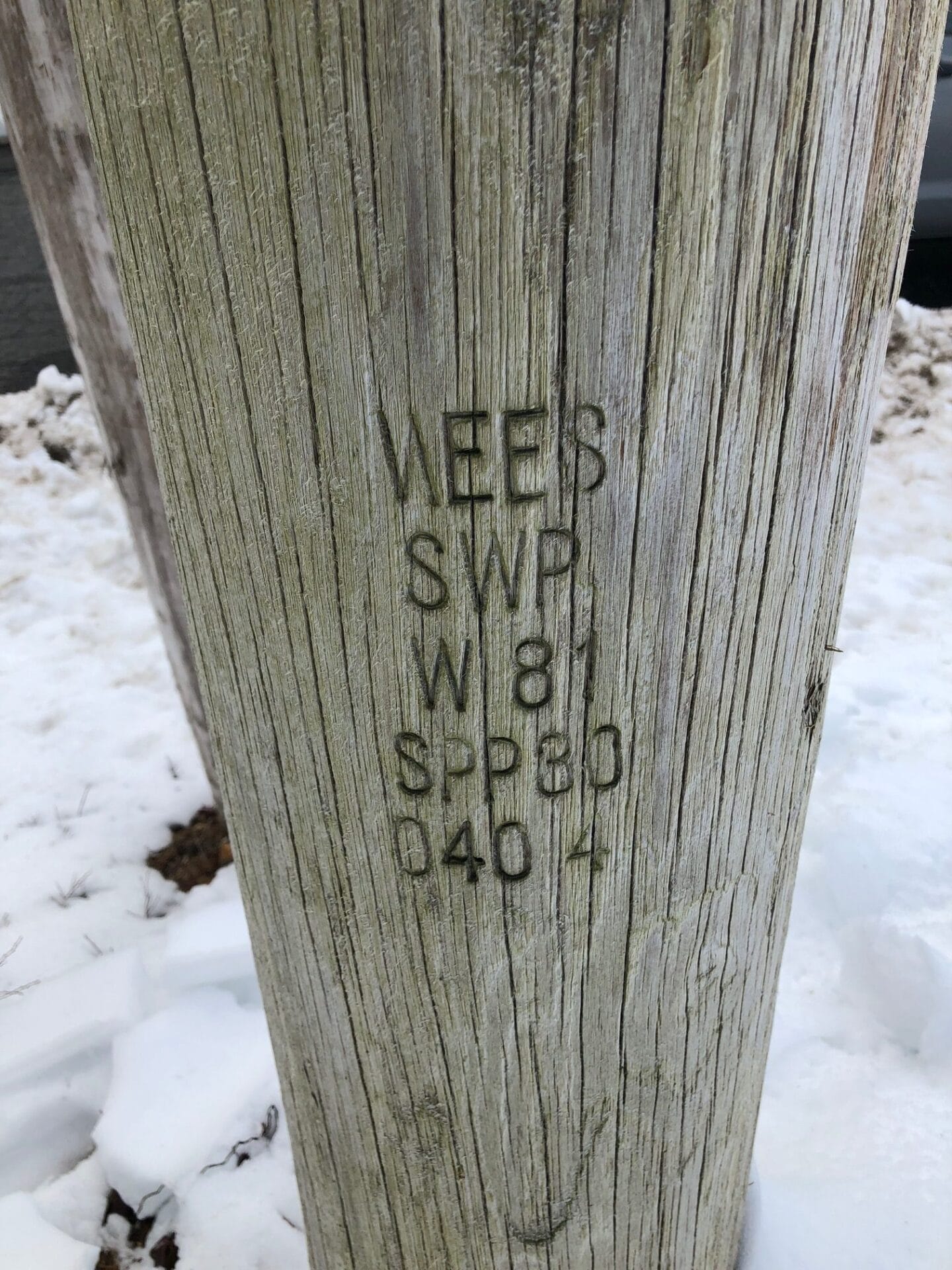
- Pole Numbers matter
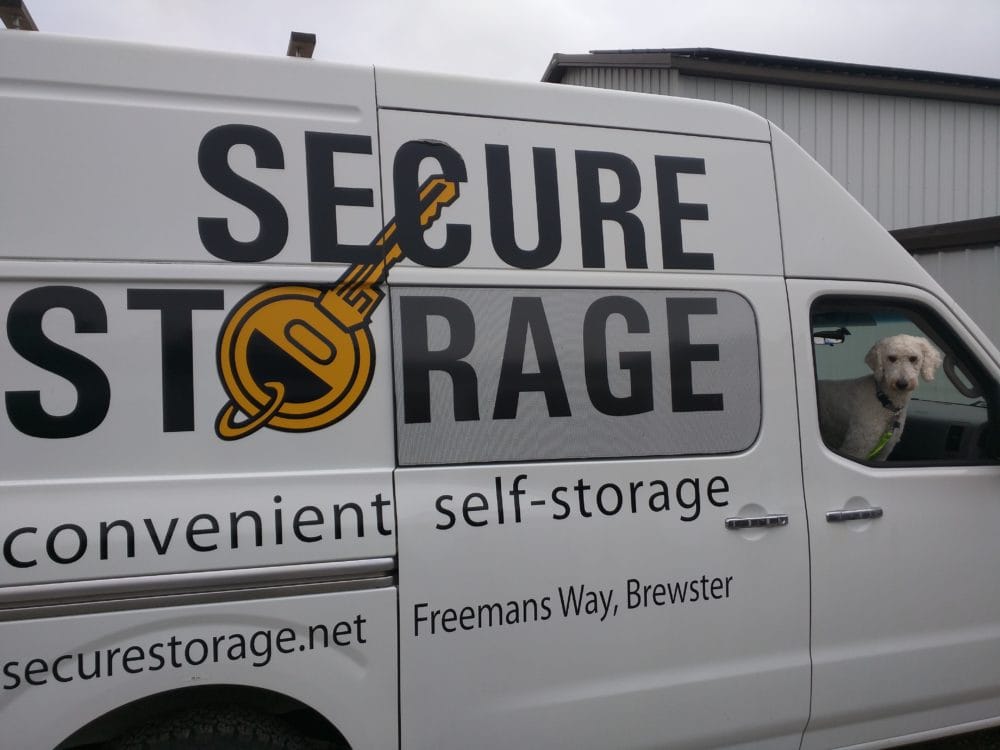
- Secure Storage & Doggo
Feasibility Analysis
Lots of work goes on in between the original hand shaking and the beginning of construction. One of the first things we do is roughly figure out what the customer can actually build, and then what that build might generate in terms of revenue – this is called the feasibility analysis. The tools that I use for this are Helioscope and Energy Toolbase. “How much solar can I build? How much electricity will it generate?” Those are the answers that Helioscope gives us. We use this tool when, ‘We want to see 95% of what will happen in the end” – Benjie Borra, Solar Design Engineer at Commercial Solar Guy. We’re given information, below images, such as where we can lay the solar modules, how many total solar modules, the amount of electricity that would be produced per month and annually, where our system losses would be and a bunch more. Linked here (pdf) is one of the earliest designs we did for the site – note the December 2017 date. And while there were some refinements, for instance the structure was much flatter, we pulled back on the DC:AC ratio a bit, and used different inverters and modules, we were pretty close in the electricity production numbers that drive the economic argument.
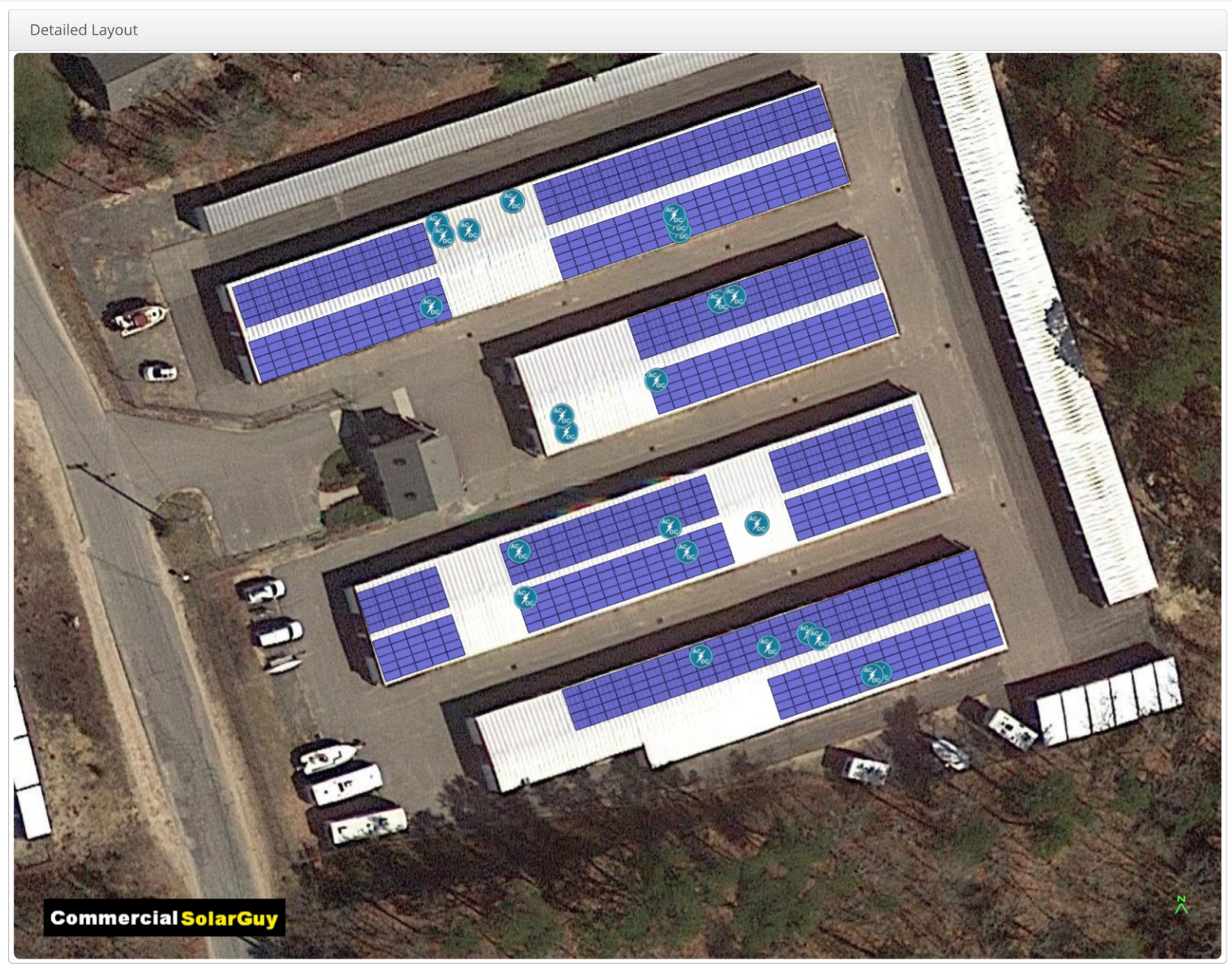
- Design Layout – what might we build
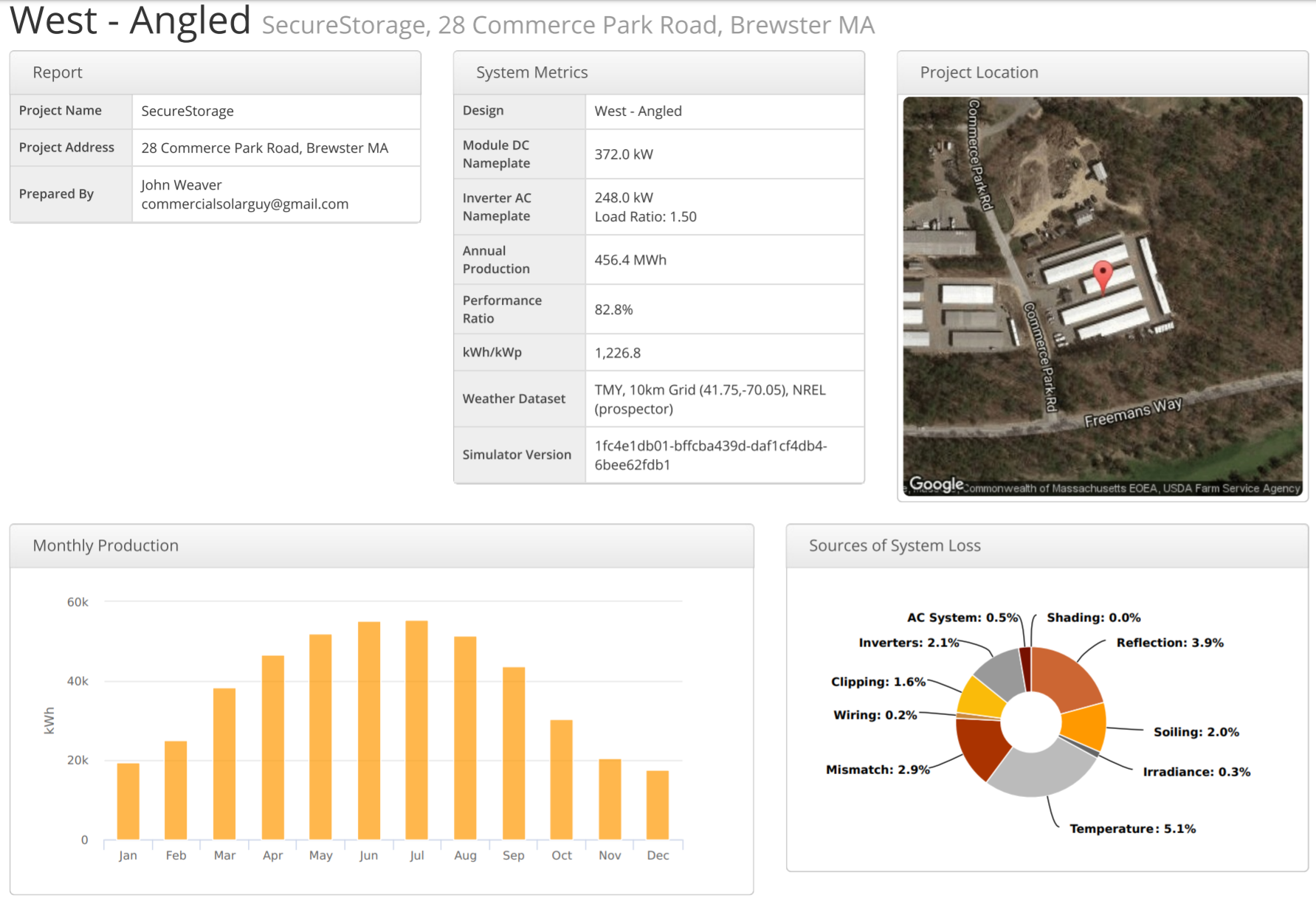
- Feasibility Analysis – Helioscope system layout
“What’s my payback?”
Gonna be honest with you here, while most everyone I ever talk to wants to care for the environment, everyone cares about the financial argument a bit more. There’s a lot of research that says regular people really like the idea of solar power as well – some because of the independence and freedom you gain, others because of the security, and of course those who want to support clean electricity generation. But with that – the majority of people looking at solar panels for commercial buildings want to know how much money will solar power save them. And that’s why we use a tool like Energy Toolbase (below) or a Microsoft Excel spreadsheet – because we need to clearly communicate the financial information. And while this isn’t the original document the customer was given for privacy reasons, it’s close to the averages we see these days in the market. In this high level description (left image) you see project costs, tax benefits and incentives, payback periods, and a visual representation of cash flow over time. This is the basis of the information that your bank will want to see.
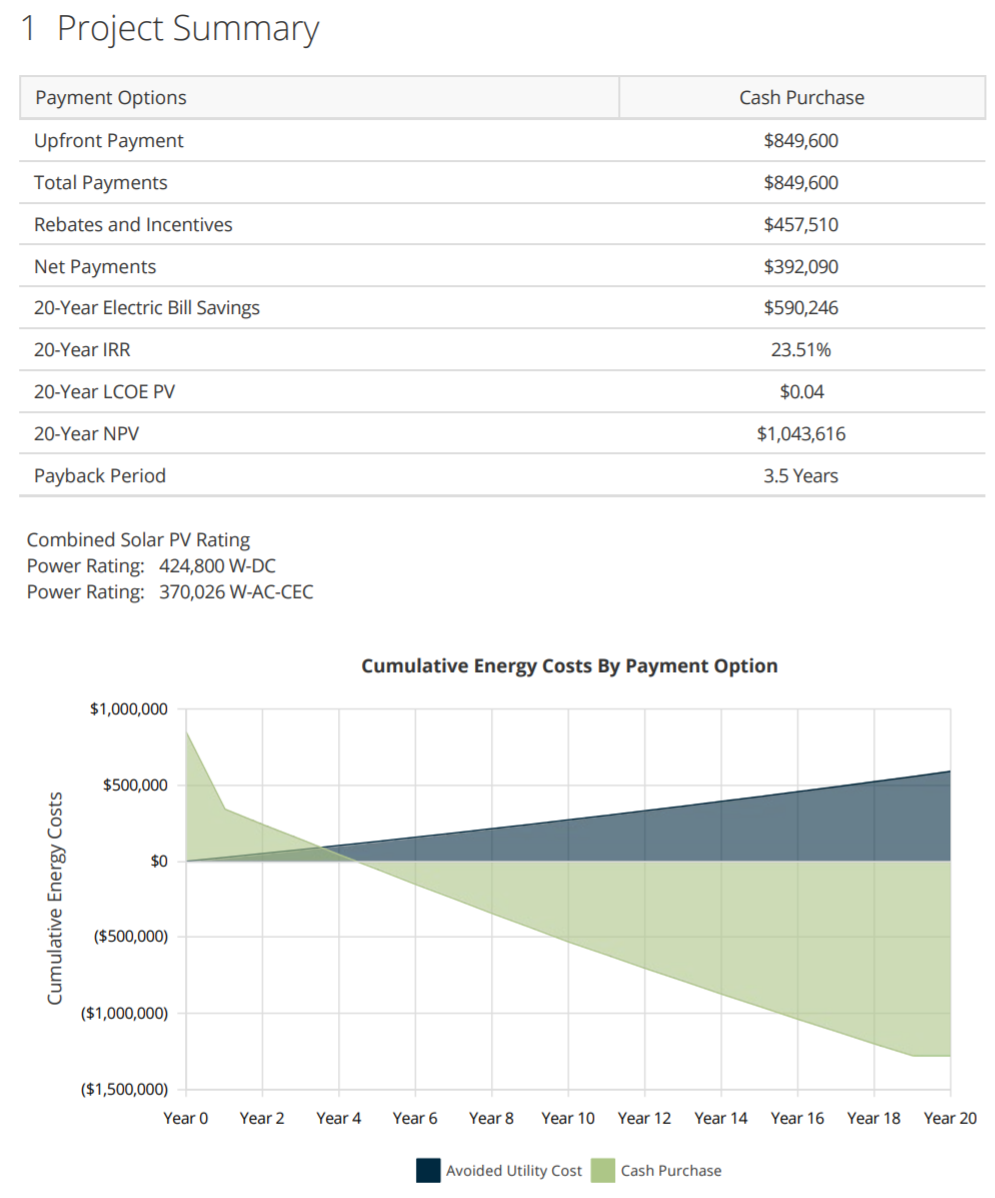
- Feasibility Analysis – Energy Toolbase

- Feasibility Analysis – Cash Flow – Energy Toolbase
Cash Flow & Revenue
In the cash flow on the right Energy Toolbase goes into individual revenue streams on an annual basis. You get to really see the meat – how much Massachusetts pays for the electricity, state and federal tax liability (accelerated depreciation and the 30% federal tax credit for solar power), and the total and cumulative cash flows. That far right column there – around where the numbers turn from the red to the black – that right there is where million dollar decisions are made. By combining Helioscope and Energy Toolbase, Commercial Solar Guy combines the skills of an experienced project developer and an almost 20 year Civil Engineer, to show in hard numbers what solar power can do for you. Make sure to read Part 2 – Solar Tax Credits and Benefits, then check out the images of this project being installed.

Self storage located in Brewster, Massachusetts with solar power in the SMART program.
Step 2 – Solar Tax Credits & Interconnection
We figured out how much rooftop solar we could build in Part 1, and that it made financial sense. Now it’s time to step up the level of work to professional level, which means we will investigate solar tax credits and benefits that might be available to us. And while you’re learning here, check out the images of the Brewster, Massachusetts solar power installation this series of posts is describing.
What can we save in solar tax credits?
First, we ask a serious question to our Certified Public Accountant (CPA) – as Commercial Solar Guy is not a financial professional – and if we look at the first couple of years of revenue from our solar system, we can see that in Year One, 48.5% of the project can be offset by tax benefits. That’s almost half the system’s cost! 
Business Energy Investment Tax Credit (ITC) –
Businesses that install solar photovoltaic (PV) systems are eligible to receive a tax credit in the amount of 30% of the total PV system cost. Unlike tax deductions, this tax credit can be used to directly offset your tax liability dollar for dollar. If your solar tax credit exceeds your tax liability you can roll the credit into future tax periods for 20 years. Read the very technical description about this credit on IRS.gov >
Federal – 100% bonus depreciation (Tax Reform Bill)
The Tax Credits in this article are out of date. The signing of The Inflation Reduction Act by the Biden Administration will be in place for the next decade. To learn about how these new incentives would apply to your solar project, please visit this Article we wrote on the topic. The signing of the The Tax Reform Bill modifies bonus depreciation under Code Section 168(k) to allow 100% expensing for property placed in service after September 27, 2017 and before January 1, 2023. By increasing bonus depreciation to 100 percent, the new tax bill essentially allows eligible entities to deduct the entire allowable tax basis of the system in the first year of operation. Under the federal Modified Cost Recovery System (MACRS), businesses may recover investments in certain property through depreciation deductions. MACRS establishes a lifespan for various types of property over which the property may be depreciated. For PV systems, the taxable basis of the equipment must be reduced by 50% of any federal tax credits associated with the system. Description of the program from true financial professional >
(MA & RI) State Depreciation
Under the Modified Cost Recovery System (MACRS), businesses may recover investments in certain property through depreciation deductions. The MACRS establishes a set of class lives for various types of property over which the property may be depreciated.
If your CPA tells you that these things make sense for you, then we should talk! If your CPA says it doesn’t align just right, then how about you get in touch with me and I’ll pay you for the rights to build on your roof. This article was written in 2019 and multiple items here are out of date. The Inflation Reduction Act, as well depreciation changes have occurred. For an updated review of depreciation, please see this article.
Can the power grid handle our solar power system?
The next serious question we ask is directly to the electricity utility – in Massachusetts that is Eversource and National Grid, and in Rhode Island it is National Grid. The question we ask is whether or not the power grid has space for our solar power system – and we do this in Eversource territory by filling out Exhibit B: Generating Facility Expedited/Standard Pre-Application Report Form. While we don’t have a pre-app for the Brewster project (we do have the request receipt though!!), below is an example of what we don’t want to see!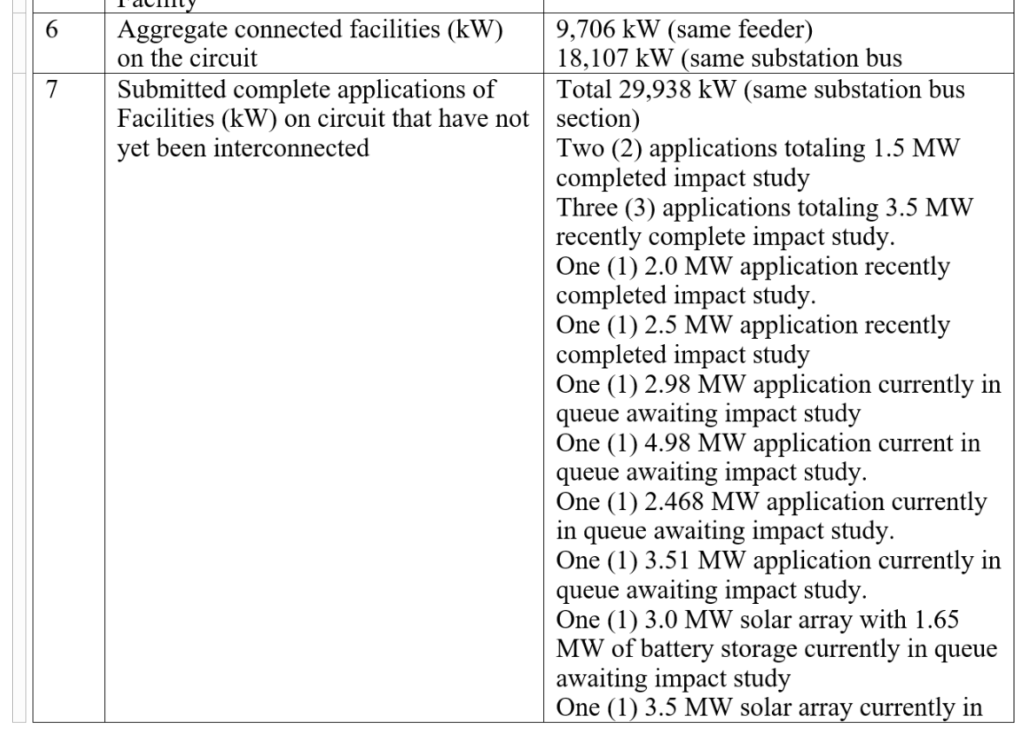

Up next:
Now that we finalized our financial questions, and have been given some preliminary data on the local power grid – its time to move on to the next chapter. Stay tuned right here on the blog. But don’t forget – check out Installing solar panels on commercial buildings: Part 1 – Feasibility Analysis, and if you don’t mind spoiling dinner – check out the finished images, video and electricity production of the project!
Step 3 – Understanding Commercial Solar Panel Installation
How much does a commercial solar panel installation cost? How long does it take? More importantly, how much can businesses save? Each project varies. For specifics tailored to you, consult the Commercial Solar guy: Request your consultation
Deep Dive: Solar Array in Brewster, MA
Discover the details of a 692,080-watt solar power setup. Check out the following images, videos, and commentary as we guide you from concept to final grid connection. For this project we analyzed the financial and technical feasibility of the site, then we more deeply analyzed the financial model associated with the site. Now we will dive in the installation.
Hardware used: Hanwha Q Cell solar modules, Solectria Inverters and Snap Racking racking. Installed by Sunworks.
First, we had to visit the site and collect important information.
Commercial Solar Panel Installation Hardware:
After a whole lot of paperwork (see the blog posts to really get a grasp on this), various pieces of hardware start to show up. There’s racking, and solar modules, and connectors, and wire, and even more hardware here and there.
Organizing the work process:
Now you gotta start rolling out all the equipment in a nicely orchestrated dance between various groups of experts. You have electricians laying out solar racking, grounding the hardware, inspectors watching over connections, drivers moving hardware from staging to deployment, so much gets done to build this 20 year lego set. To get going, you gotta get setup first…
Solar racking:
The racking goes down first. Thousands of pieces of aluminum tied together, patience and precision in the layout, engineered to minimum weight and last for decades, focused on saving labor and competing on price at every level. Solar racking is so nice.
Solar modules and wiring:
Once you get the racking down, you start doing the pretty work – laying our solar modules and running wiring. Solar module laying is quite fulfilling, as everyone of course identities solar power with the quite vain solar modules. Over two thousand modules in total delivered.
Inverters for Commercial Solar Panel Installation:
Really though, a lot more attention ought be given to inverters – and at the highest end of the industry this is happening. Because truly, the solar inverter is the most active piece of hardware out there. Solar modules, once delivered, quietly do their job. Racking, stays stable for decades, copper wiring and transformers – stoic, but that inverter needs a lot of love and attention to work as hard as it does every day. Much respect.
Maintaining your business during installation:
Keeping a business running while the construction goes on is so very important, and certain jobs must be done fast. Business continuity is of the utmost importance, and we do our best to do the work that might affect your customers in a highly coordinated matter. Communication is key.
Connecting to the grid:
Somehow, all of this electricity has to go from the buildings rooftop, into the power grid. That involves a medium voltage crew to build out a lot of unique switchgear. The electricity utility will visit a few times as well, including installing a couple of our own poles. There’s copper run under ground, and powerlines run over head. We’re just here to install the facts ma’am!
DCIM100MEDIADJI_0030.JPG
Our client, whose property is shown here, just got his first check through the SMART program.
Commercial Solar Monitoring & Maintenance:
And heading out into the following decades, you the customer can monitor the output of your investment to understand exactly what’s going on – 24 hours a day, from anywhere on earth. Check out the live production of our system (which is shown below).
Visit Part 1 of this project if you’d like to learn more about the site’s feasibility analysis or financial modeling, or visit Part 2 to see a deeper dive into the financial modeling, as well how the project connected to the power grid.
Sunworks, our contractor for this project, offers a 25 year warranty with system monitoring as the lynchpin. You’ll be given a list of basic upkeep tasks to do on a schedule, and if something does happen – expect a visit or two in the first couple of years to ensure your system is running optimally.

We’ve also got a couple of short videos for you to enjoy – we really love this stuff!

